Repair has always been an expensive process, so it is not surprising that modern technologies They are trying to create materials that would combine strength, low cost and the ability to periodically change something in the interior without unnecessary costs of labor and materials. A striking example of this would be painting rooms with wallpaper.
However, you should not assume that choosing this wallpaper and paint for it will be a matter of one minute. It can be difficult for a beginner to understand these issues, so before going to a hardware store finishing materials It’s worth finding out what paintable wallpaper is and how to treat it in the future.
They allow you to make repairs once and periodically change them over time. This explains their popularity. However, different types of wallpaper are intended for painting, each of which has its own advantages and disadvantages. What they have in common is that they are all moisture resistant and absorb color pigments well.
So, what kinds of wallpaper can be painted?
When choosing wallpaper for painting, just like for regular wallpaper, you need to take into account not only the size of the room where it will be used, but also its specifics - temperature changes, humidity, exposure to sunlight and other factors. It is also worth remembering that paper wallpaper is not recommended for use in new buildings due to shrinkage of the house and, as a result, changes in the volume of the walls.
For different types of wallpaper it is necessary to use and different paint, which would compensate for the shortcomings of one or another wallpaper material and allowed the wallpaper to remain “fresh” longer after painting. In this regard, they highlight alkyd, water-dispersion and acrylic paints for wallpaper. Each of them is worth talking about separately.
Alkyd paints for wallpaper
This type Wallpaper paints are not suitable for painting canvases in living rooms and bedrooms, that is, they are intended primarily for painting non-residential areas of the house. This is explained by the fact that the composition alkyd paints includes oils and resins that have a negative impact on human health if they remain in the premises treated with them for a very long time. With all this, alkyd paints have their own advantages:
- They are more saturated in color, tones and halftones are more pronounced;
- Alkyd paints are resistant to light and moisture;
- These paints contain antifungal additives.
Alkyd paints are less durable than acrylic paints. The average service life of these paints is approximately five years, but it is worth considering that gradually appearance of this coverage is also getting worse. Alkyd paints are fire hazardous and can hardly be classified as environmentally friendly coatings.
Water-dispersion paint for painting wallpaper
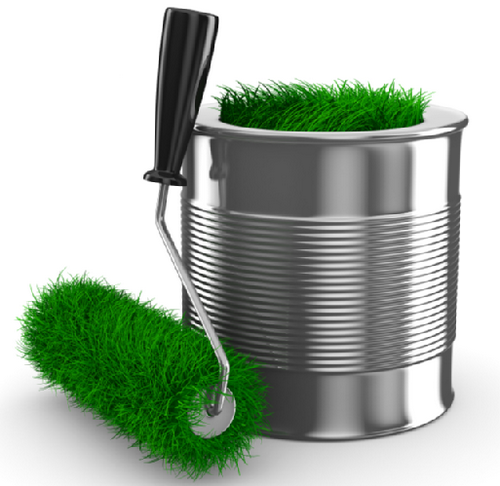 This type of paint is the most common for, as it is harmless to human body, allows you to use a wide palette of colors and has a number of other advantages compared to the previously discussed alkyd paint.
This type of paint is the most common for, as it is harmless to human body, allows you to use a wide palette of colors and has a number of other advantages compared to the previously discussed alkyd paint.
For a beginner, it may be difficult to figure out what difference between water-dispersion paints and acrylic paints, which will be discussed a little later. For a more precise understanding, it should be said that acrylic wallpaper paint is a type of water-dispersion paint. The latter can be either latex on an acrylate base or acrylic on a latex base. IN in this case It is the first subtype of water-dispersion paints for wallpaper that is being considered.
Latex paints on water-dispersion acrylic base They cope well with coloring structural wallpaper on any non-woven base and can also be used for glass wallpaper. Wallpaper painting latex paint can be used both indoors and in the living areas of the apartment - living rooms and bedrooms, as it is practically odorless and dries quickly.
Latex water-dispersion paint It is distinguished by its strength and elasticity, which is achieved due to the acrylic latex and butadiene styrene included in its composition. You can most often buy latex paint in stores. white, and the desired shade is achieved using tinting. It should be borne in mind that it will be almost impossible to achieve a rich shade, but pastel shades will be amazing.
It is worth remembering that when choosing paint you need to take into account the conditions in which it will be used. For rooms with high humidity It is necessary to take paint with increased wear resistance; for bedrooms and living rooms, simple latex wallpaper paint is suitable. Most wallpapers can be lightly wet cleaned after being coated with latex paint.
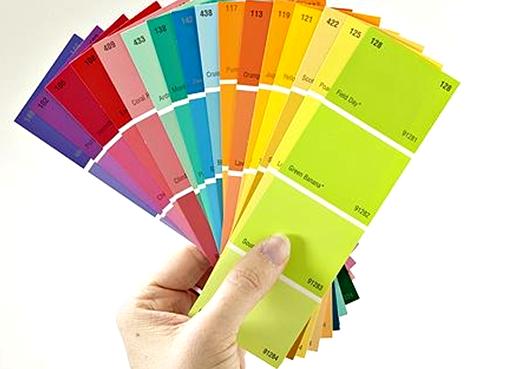 Acrylic paint widely used in various types, and painting wallpaper is no exception. They gained their popularity due to the fact that they are safe for health, have virtually no odor and dry fairly quickly. Painting wallpaper with acrylic paint is suitable for most rooms, including even children's rooms. However, it costs correspondingly more.
Acrylic paint widely used in various types, and painting wallpaper is no exception. They gained their popularity due to the fact that they are safe for health, have virtually no odor and dry fairly quickly. Painting wallpaper with acrylic paint is suitable for most rooms, including even children's rooms. However, it costs correspondingly more.
Acrylic paint on water based It is recommended to paint non-woven wallpaper, although paints from various manufacturers can be used for painting both paper and glass wallpaper. Acrylic paint can be used for both exterior and interior painting of wallpaper. The color saturation of acrylic paints is much higher than that of latex paints, and they practically do not fade.
Acrylic water-dispersion paints for wallpaper Most often they come in white, and if necessary they are tinted with special colored pastes. In order to achieve the desired uniform shade, you can computer-tint the paint, but in general, acrylic paint can be “diluted with color” yourself.
Pros of acrylic paint does not end with its lack of an unpleasant pungent odor and quick drying. The material under the acrylic can breathe freely, which prevents steam from accumulating in the room. Many acrylic paints contain antifungal additives, which further protects the premises treated with these paints.
In conclusion, I would like to note once again that:
- The most common and acceptable option for paintable wallpaper for residential premises is non-woven wallpaper;
- Alkyd, latex and acrylic paints can be used to paint wallpaper, the most preferred option being the latter;
- When choosing paint for wallpaper, you must first take into account the possibility of using one or another type of paint for the selected wallpaper, as well as the conditions of the room that will be decorated with this wallpaper.
How to choose paint and wallpaper, video:
Wallpaper is intended to decorate the interior of a room, more specifically the walls. Their variety can bring a unique style to a room at home.
Sometimes there is a need to paint the wallpaper. Most often this is due to the fact that the old color is boring, and there is no opportunity or desire to re-glue new ones.
However, there are other reasons. For example, they are dirty or faded. Painting will update the appearance of the wallpaper, transforming the interior of the room. It is important to approach this process wisely. And its key element is the choice of paint for wallpaper to be painted. And you should start from it.
Painting wallpaper will help you quickly change your interior
Paintable wallpaper refers to those varieties that the buyer can independently give the desired color. They are mostly white, with relief over the entire surface. It is not advisable to paint ordinary wallpaper, not for painting.
Painting tools
The most suitable tool for painting wallpaper is a paint roller. It has a large contact area and is easy to work with. There are several types of roller: velor, fur and foam. They all differ in material and length. work surface. Therefore, they are suitable for different situations.
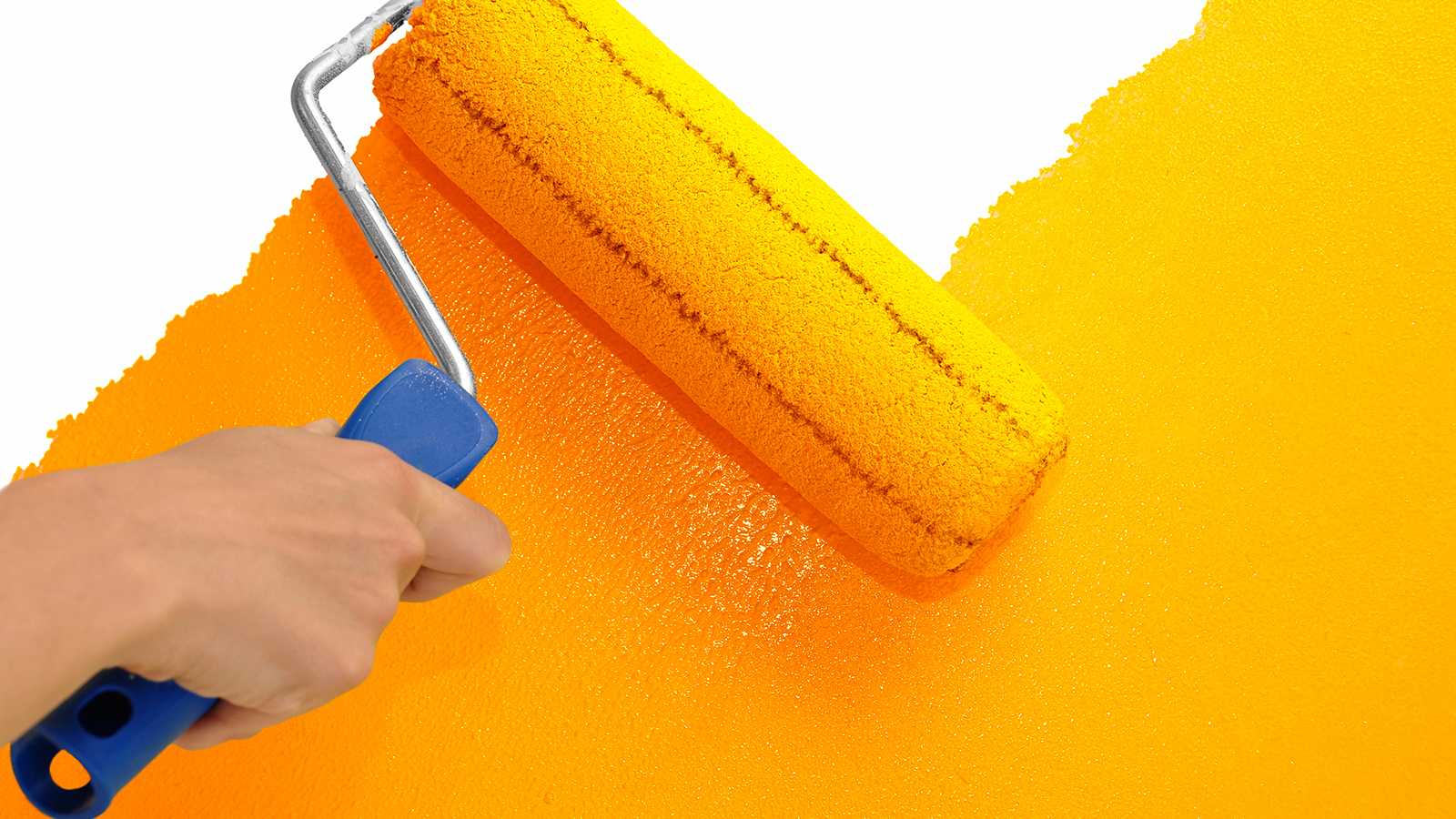
A roller is the most suitable tool for painting wallpaper.
For example, a roller with long pile can deeply color the glass wallpaper material. And with a short one, just go through the texture.
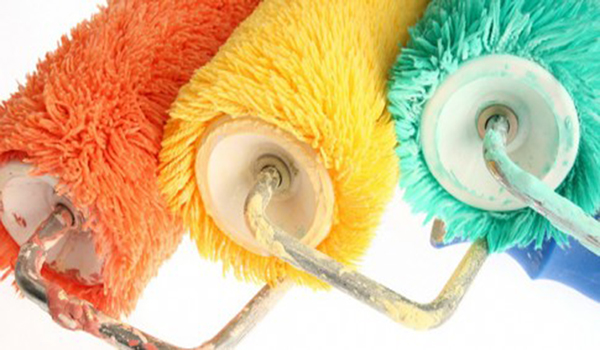
Long pile roller
The foam type of roller provides the smallest area of contact with the surface. When painting with it, small bubbles without color will appear on the wallpaper, since the surface is porous.
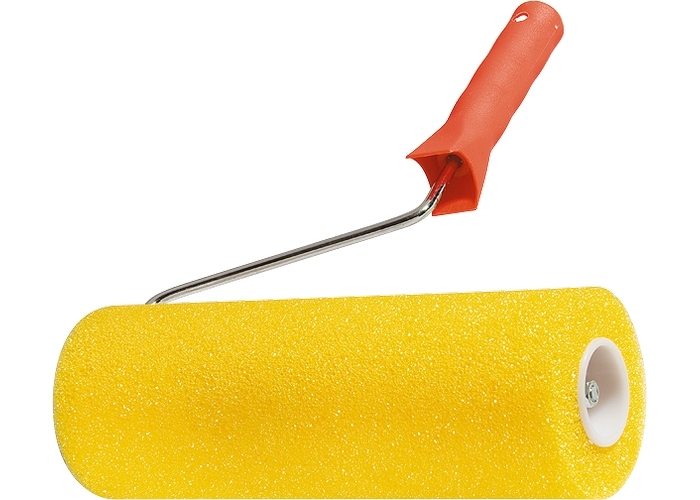
Foam roller with handle
For each situation, each type of wallpaper paint and its material, you should select a specific roller. With this approach, coloring can be done as quickly as possible, and most importantly, with high quality.
Paint brushes are less effective. However, they will be able to paint hard-to-reach places where a roller cannot reach. These are mainly corners or joints.
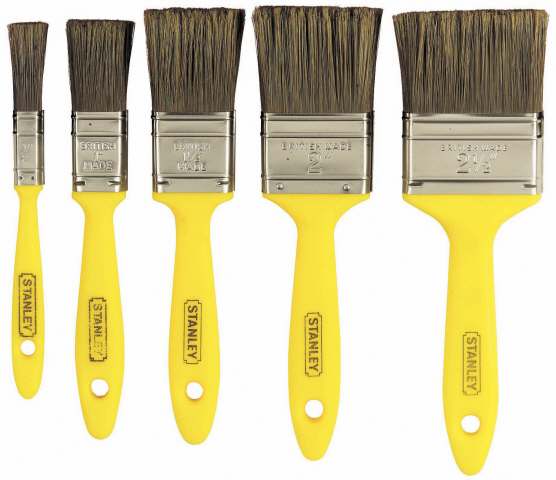
Paint brushes will help paint hard-to-reach places
Types of paint
In total, there are several suitable paints for wallpaper for painting. The main ones are acrylic, alkyd and water-dispersion varieties. They all differ in price category, operating conditions and other characteristics. For this reason, it is recommended that you familiarize yourself with them before directly choosing paint.
Alkyd paints for wallpaper for painting
This type of paint is intended primarily for use in non-residential or utility rooms dwellings. This area of application is associated with possible harm for health from them. The fact is that alkyd paints contain various oils and resins that negatively affect the body. People who are in a room with such painted wallpaper may become ill over time. Plus, this can lead to serious respiratory diseases.
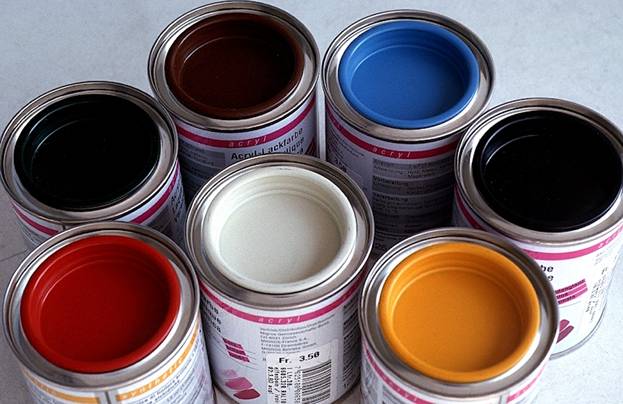
Alkyd paint for wallpaper for painting
However, despite their harm, alkyd paints have a number of undeniable advantages. They are more saturated in color; similar coloring for wallpaper will look nice in utility rooms. It is also worth noting their high durability. These paints tolerate high humidity well and do not lose their color under prolonged exposure to lighting. They also contain antifungal additives. Thanks to this, wallpaper painted with alkyd paints will not begin to rot.
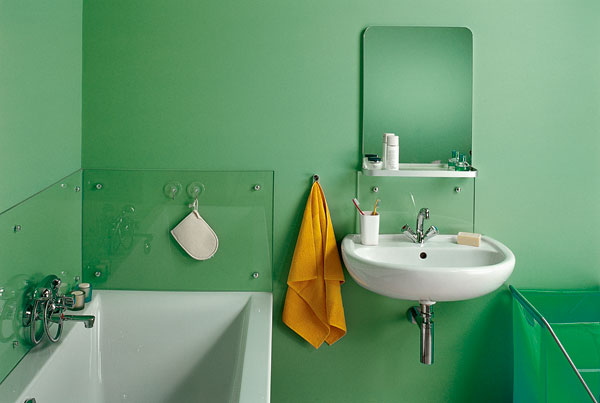
Due to its water-repellent properties, alkyd paint is suitable for painting a bathroom
Their service life is on average about five years. Over time, their appearance deteriorates. It is also worth adding the fact that alkyd paints belong to the class of fire hazards. This reduces their scope of application.
To summarize, alkyd paints are absolutely not suitable for application to wallpaper in residential areas of the house. Because they are harmful to the human body. But they fit perfectly in utility rooms. For the price per liter they are quite low.
Water-dispersion paints
This type of paint for painting is currently the most popular and used. Unlike acrylic, the water-dispersion variety does not contain any harmful components, oils or resins. For this reason, it is perfect for painting wallpaper in living areas of the house. Plus, there are countless color variations. So water-dispersion wallpaper paint will fit perfectly into any room interior, adding beauty and uniqueness to it.
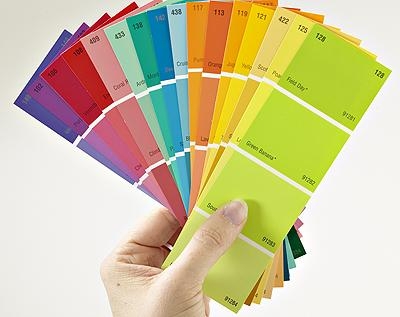
Water-dispersion paints have a rich range of colors
It itself is divided into several key subspecies. The first of these is latex paint based on water-dispersion acrylic. It is intended primarily for painting non-woven wallpaper with a relief texture. Also suitable for fiberglass. Latex paint dries quickly and has a slight odor. It is barely noticeable and not off-putting. Therefore, it can be used to paint the kitchen, bedroom, living room, as well as other living areas of the home. But it is not suitable for a bathroom where air humidity is high.
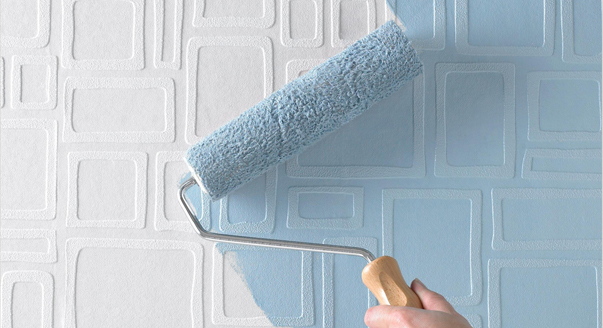
Painting wallpaper with latex paint
There is also just latex paint on a water-dispersion basis, not acrylic. It is characterized by its durability. The paint contains acrylic latex and styrene butadiene. Thanks to this, its elasticity is achieved. In stores, this type of paint is most often sold white. You can add color to it using tinting. Basically, only soft shades are obtained, sharp shades are almost unattainable.
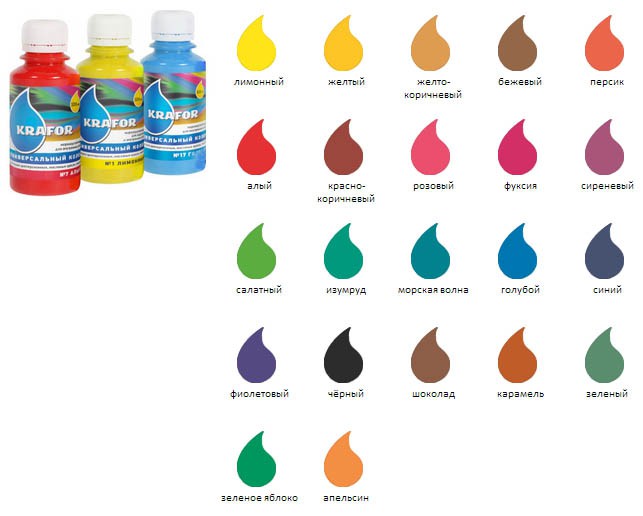
You can give latex paint the desired color using a tint
Acrylic paint for wallpaper for painting
The acrylic variety is very popular in all types of painting work. Including in the living areas of the apartment. Even for children's rooms, due to its complete harmlessness. Therefore, this wallpaper paint is very suitable. It does not contain any harmful components or chemicals. It is completely safe for human health. But due to the extensive list of advantages, acrylic paint is considered one of the most expensive.
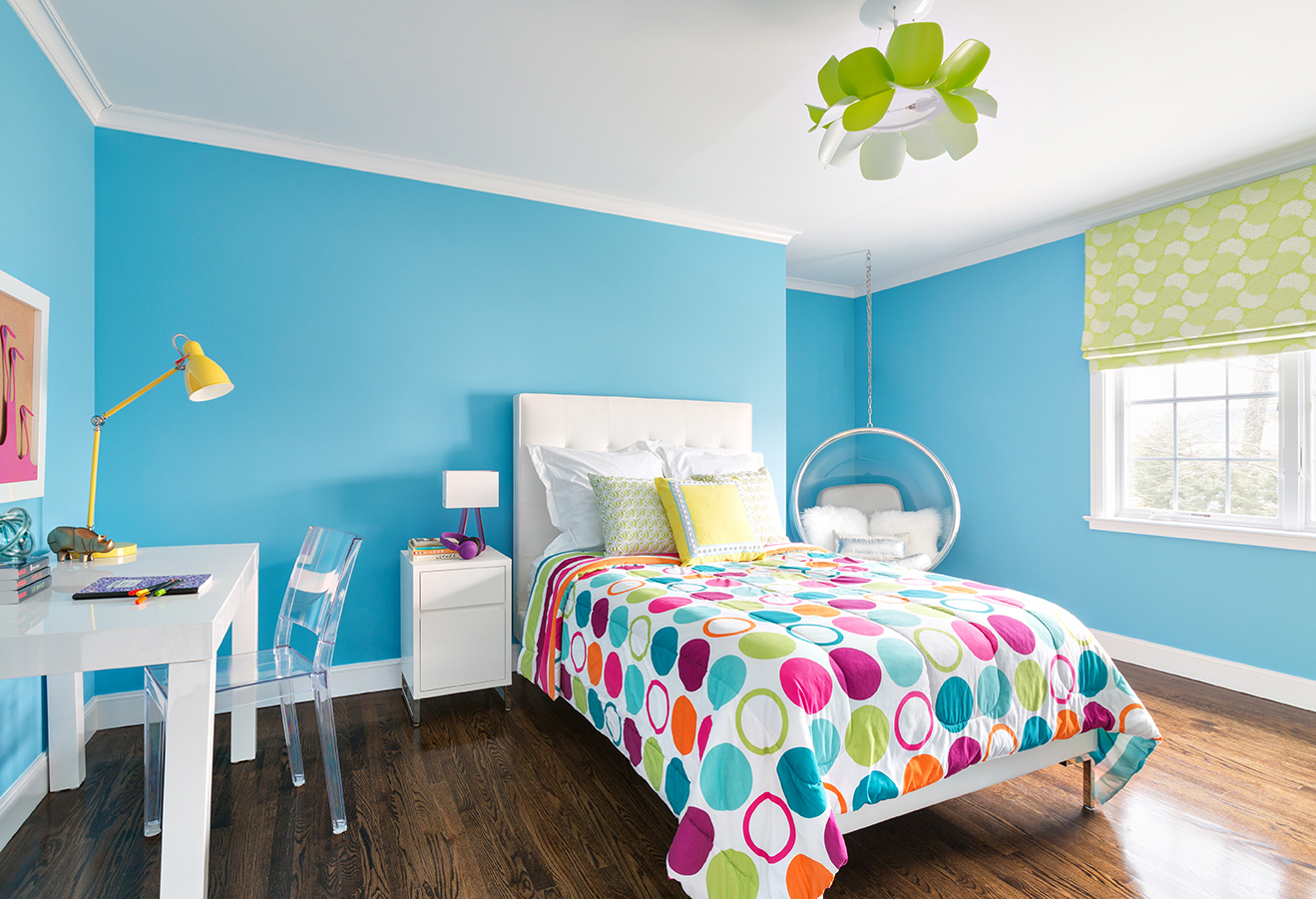
Acrylic paint is completely safe, so it is ideal for painting children's rooms.
Water-based acrylic paint is intended for non-woven materials. However, some of its varieties are also suitable for paper wallpaper and fiberglass. Including for preliminary priming. Water-based acrylic paint differs from water-dispersion latex paints in its saturation. Wallpaper painted with it can look very bright. Another advantage is the fact that the color does not fade over time. Water-based acrylic paint on wallpaper will last a very long time; throughout its entire service life there will be no reason to re-paint it.
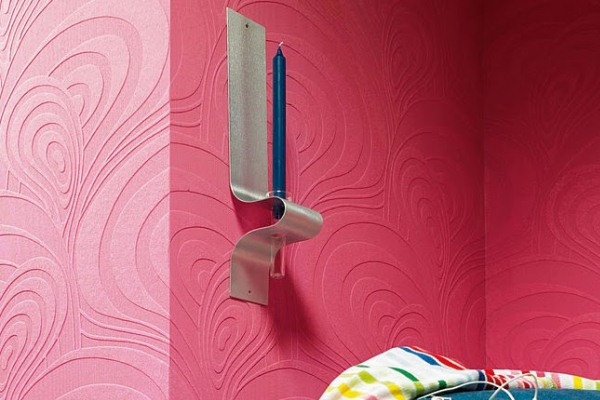
Acrylic paint is resistant to fading
This variety is completely devoid of any odors. This is one of the positive differences from water-dispersion paint, which has a specific smell. No film is formed during painting. For this reason, the wallpaper under the paint can breathe, which prevents steam from accumulating in the room. And the final advantage is its drying time. It only takes one day. Afterwards you can touch the wallpaper without fear of getting dirty or ruining the paint job.
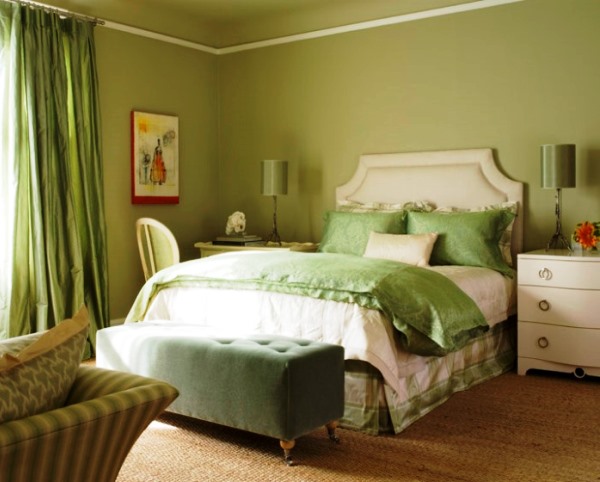
Acrylic paint dries quickly and has no odor
Water-based paint
Water-based paint is a combination of latex (acrylate), antiseptic, filler and fastening chemical components. Just like acrylic and water-dispersion, it is environmentally friendly. Therefore, it is suitable for painting work in residential areas.
Water-based paint is characterized by moisture resistance. Wallpaper that has been painted with it can be washed with a damp cloth. It won't cause them any damage. It also has absolutely no odor. Because of this, it can be used in a child’s room without fear of an allergic reaction in the child.
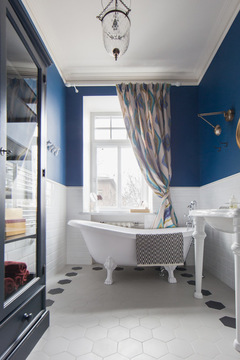
Water-based paint is highly moisture resistant
This type of paint dries quickly, one day is enough. The film formed on the wallpaper “breathes”. The paint has high vapor permeability and condensation will not accumulate on it.
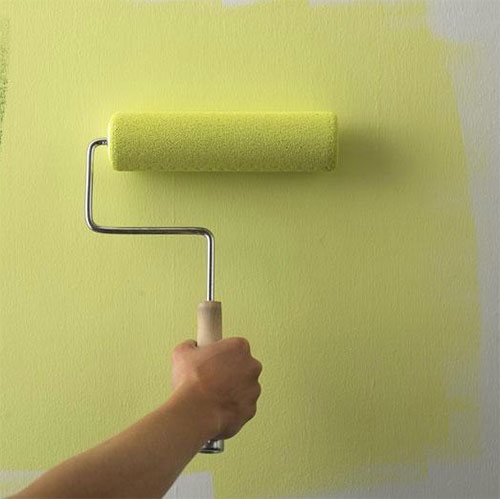
Water-based paint dries within one day
Due to its performance characteristics water-based paint Silicone is suitable for painting wallpaper in the kitchen and even in the bathroom. This is due to increased resistance to moisture.
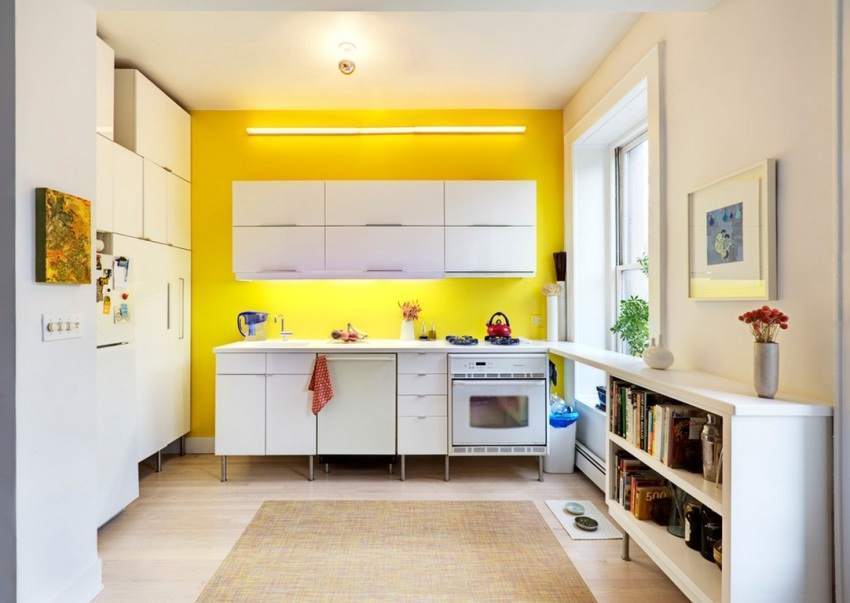
Water-based paint is suitable for painting wallpaper in the kitchen
The right choice of paint for wallpaper
The choice of paint should be based on two main factors: the material of the wallpaper and the place where it is glued. But besides them there are many others, less important elements that need to be taken into account.
Most often you can find four materials for wallpaper:
- Paper. The simplest and most common variety, characterized by a low price.
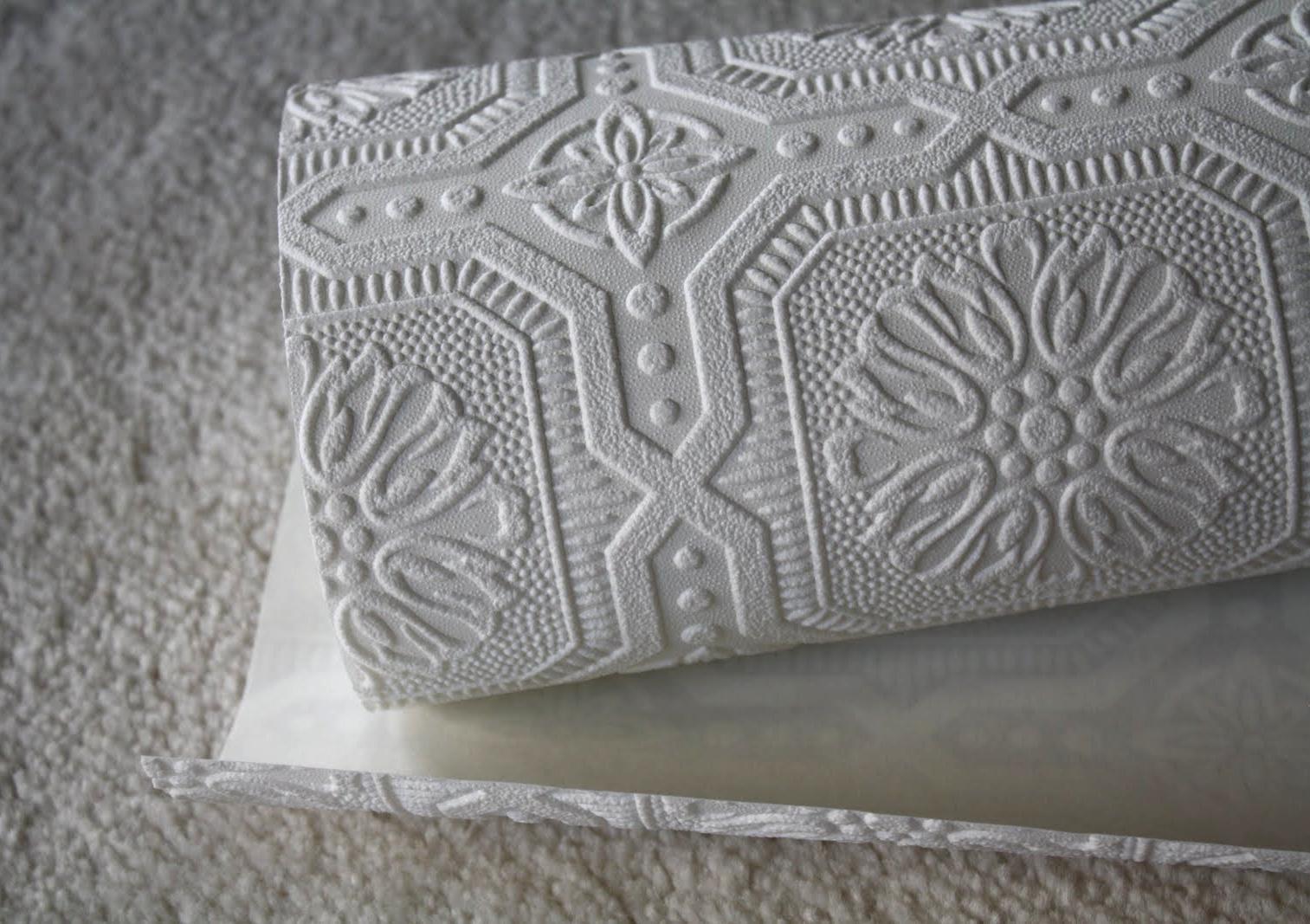
Paintable paper wallpaper
- Non-woven. This type of wallpaper is made from cellulose fiber and various additives. They are distinguished by their texture and relief.
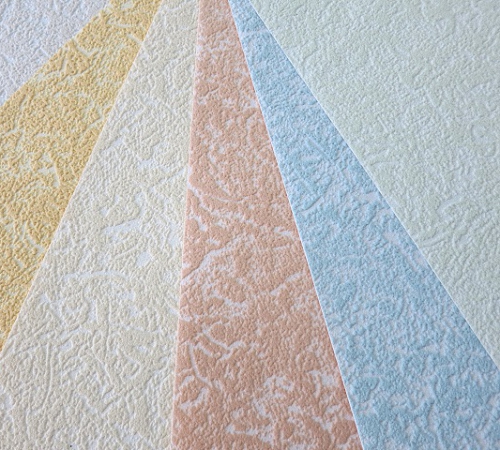
Textured non-woven wallpaper
- Glass wallpaper. This variety is characterized by its durability. But it requires a lot of paint to change colors.
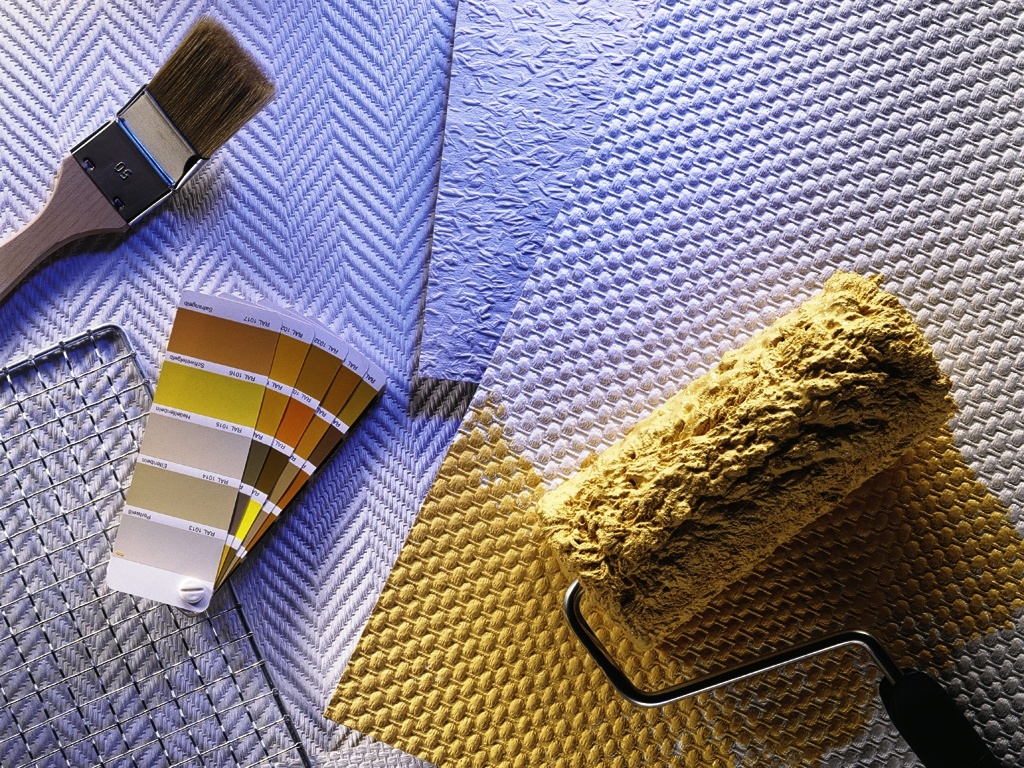
Durable glass wallpaper for painting
- Vinyl. This is a very reliable material for wallpaper, but gluing it will be very expensive.
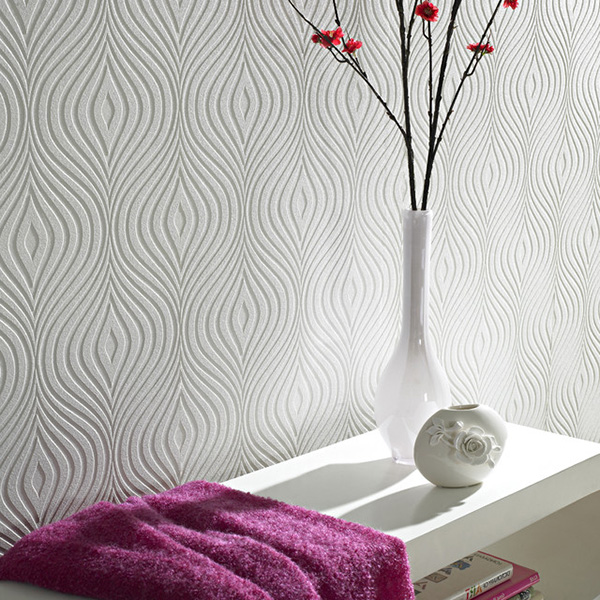
Vinyl wallpaper for Pokarski
For classic paper wallpaper will do water-based paint. For non-woven fabrics - water-dispersion. Fiberglass is best painted using acrylic or latex paint.
It is important to note that in rooms with high humidity it is best to use paint that can withstand this regime. These are acrylic and latex. These species tolerate small amounts of liquid and can even be wiped with a damp cloth. This is due to the thin film that forms on the wallpaper as a result of painting.
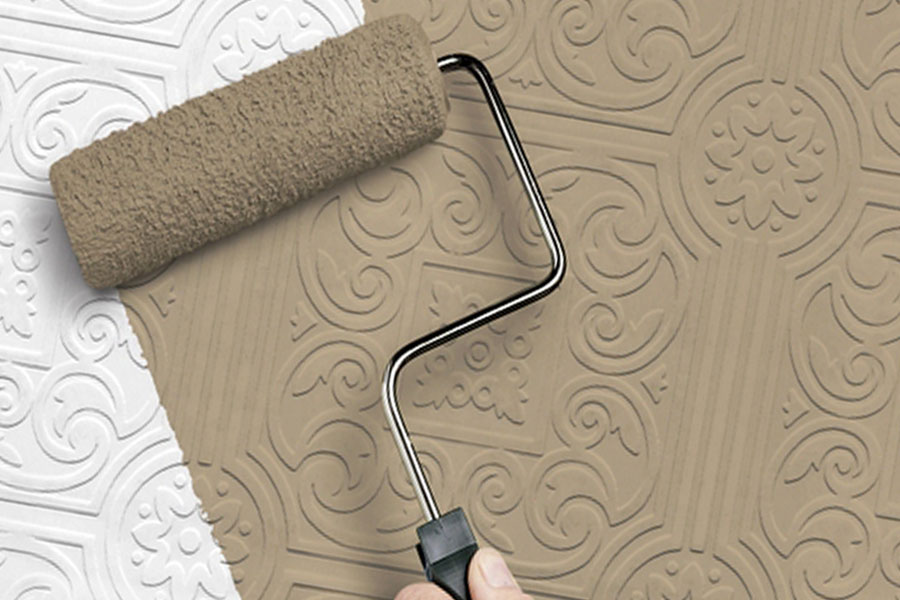
Wallpaper painted with latex paint can easily withstand wet cleaning
All paints have a certain light reflectance: matte and semi-matte, satin and glossy. All of them apply to different rooms Houses.
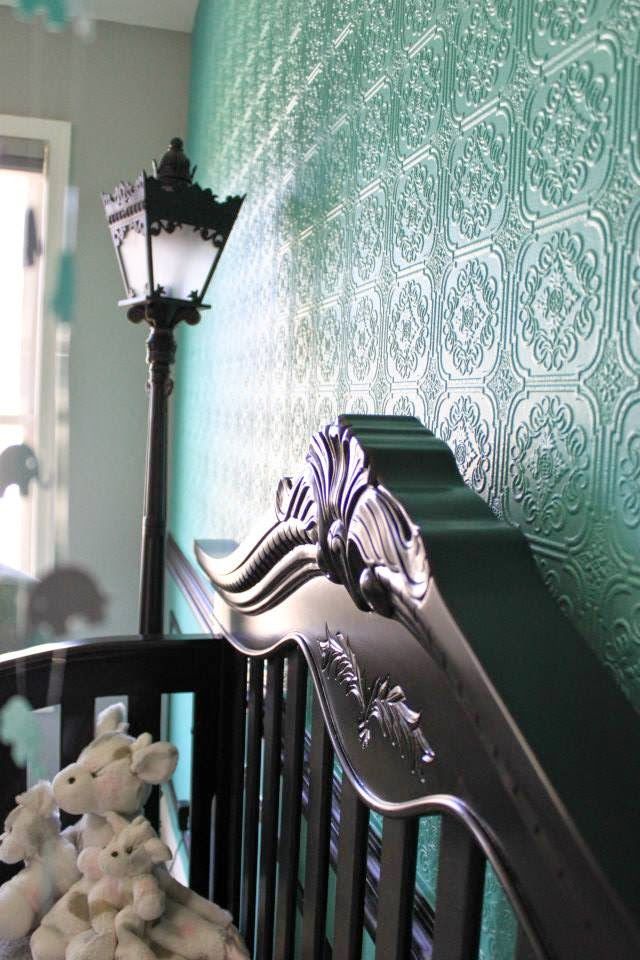
Gloss paint for wallpaper for painting
Matte and semi-matte paint is more suitable for rooms with excess lighting. For example, the living room. Glossy, on the contrary, reflects light well, so it is applicable in rooms with a lack of it. Satin paint has average performance and is suitable for the kitchen and bedroom.
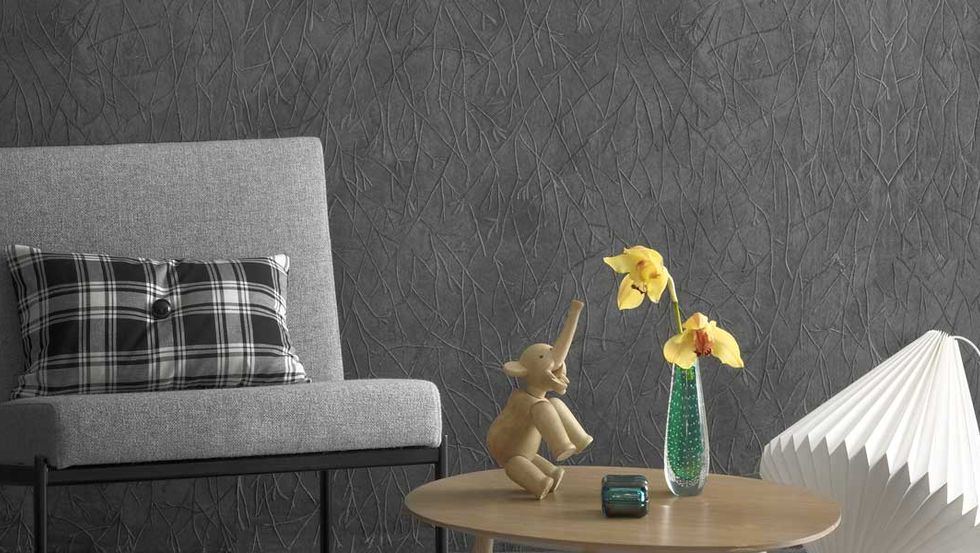
Wallpaper painted with matte paint
The most matching wallpaper non-woven and glass wallpaper are used for painting. They have high performance characteristics and wear resistance. But it is very important to choose the right paint for each wallpaper. This will only increase their durability. It will also additionally transform the appearance of the product. As a result, a room with non-woven or glass wallpaper will sparkle with new colors.
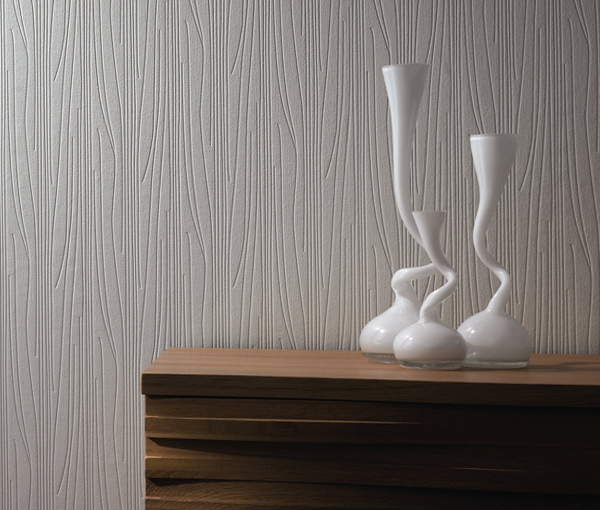
Non-woven wallpaper – best option for painting
Painting features
After the choice of paint in which the wallpaper will be painted is made, it remains to become familiar with the specifics of the process. This is done in order to avoid unnecessary mistakes, and the result in the end was pleasing to the eye and did not require rework. Painting features vary for each wallpaper and type of paint, so you should consider them in more detail.
For paper wallpaper
Paper wallpaper for painting is produced in multilayers. Usually there are two or three. This ensures reusable painting. Manufacturers recommend changing the color of paper wallpaper no more than five times. Afterwards, their structure collapses and they deteriorate.
Paper materials for wallpaper are very cheap, so their quality is not high enough. For high-quality painting, one coat is sufficient. You should not heavily saturate the wallpaper with paint. It is enough to apply a layer superficially. If after this there are any stains or color defects left on the wallpaper, then it can be supplemented with a second one.
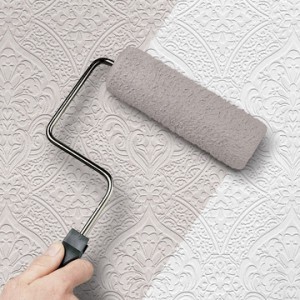
Water-based paint is suitable for paintable paper wallpaper
For paper wallpaper, water-based paint is most suitable. The product will last in this form for several years without losing its appearance.
For non-woven wallpaper
Non-woven wallpaper is the best option for painting. The material itself is quite high quality and reliable. The texture of the wallpaper is embossed, and this is not lost as a result of painting. For non-woven wallpaper, latex or water-dispersion paints are more suitable. In total, the material can withstand up to 15 repainting cycles.
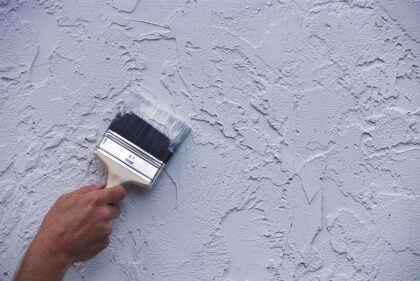
When painting non-woven wallpaper, the texture is preserved
The color changing process itself is quite simple. Apply the required paint using a roller. It is important not to saturate the material with it, but to distribute it evenly, just two layers. Moreover, the second one should be thicker and richer. And apply it 10-20 minutes after the first one.
For glass wallpaper
Due to the materials used in production, glass fiber wallpaper is the most durable and wear-resistant option. But at the same time quite expensive. Usually their texture has a relief image on it, which is not lost as a result of a color change.
Paint on glass wallpaper must be applied in larger quantities than on others. It is absorbed very well, distributed between the fibers. Unpainted fiberglass wallpaper is unpleasant for the skin. Therefore, all work should be carried out wearing construction gloves or an alternative.
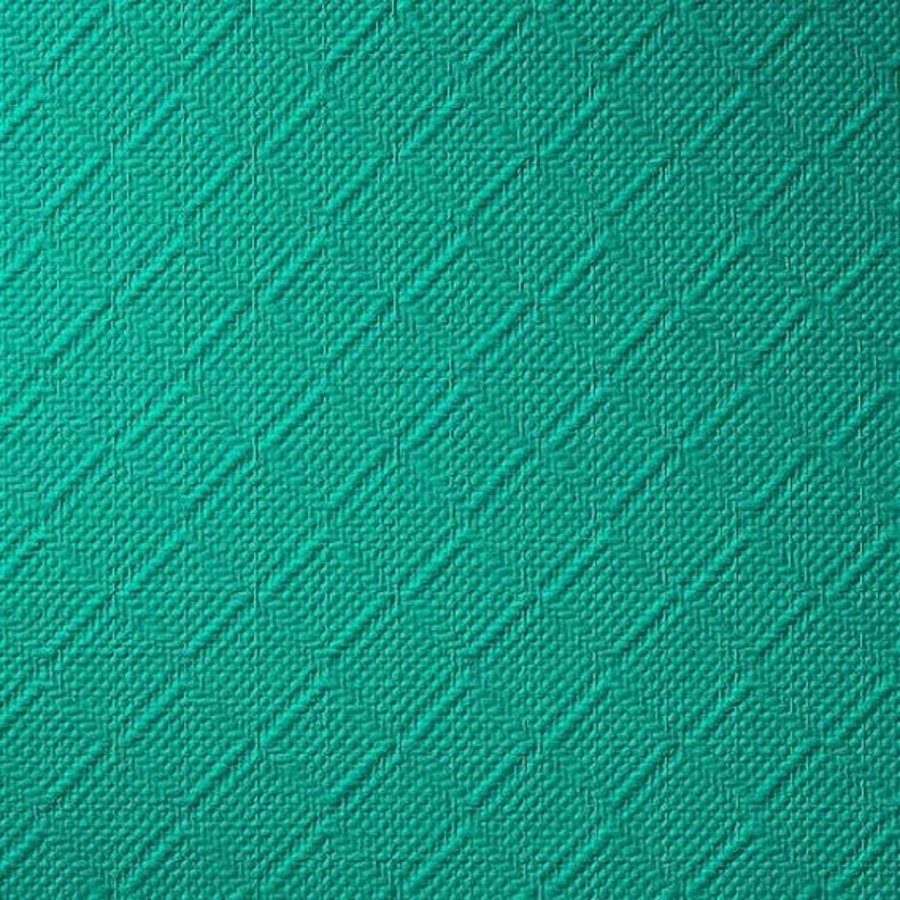
Painting glass wallpaper requires more paint
Before painting glass wallpaper, a primer must be applied. Acrylic or latex paints are best suited for it. They are among the most durable and resistant, which will go well with the characteristics of fiberglass. As a result, the product will last a maximum period, while its appearance and performance characteristics will not gradually decrease.
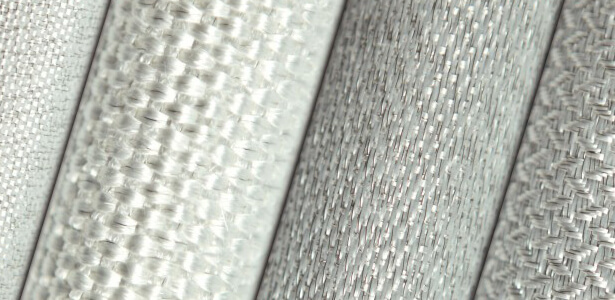
Before painting, glass wallpaper is primed
The paint should be applied in two layers. Moreover, after applying the first glass wallpaper, you need to dry completely.
For vinyl wallpaper
Vinyl wallpaper contains a multi-layered texture. Here the paint should be chosen according to the manufacturer’s statement. Usually the specific variation is indicated on the wallpaper roll.
Putting on makeup vinyl wallpapers in two layers. The first one is a primer. They don't need to dry out completely. The second coat should be applied ten minutes after the first. A minimum of paint is applied to the wallpaper so that it does not absorb deep into the material.
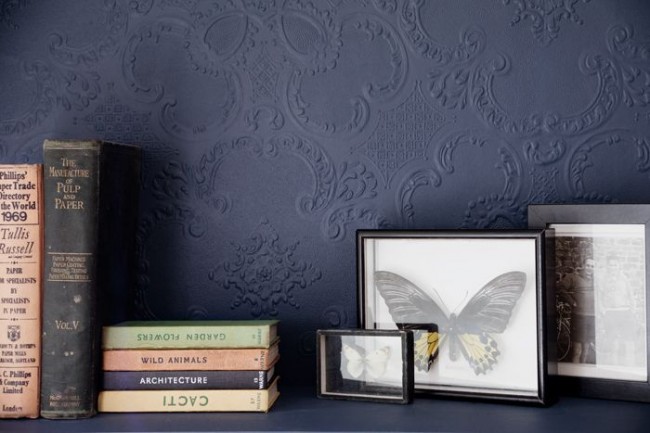
Vinyl wallpaper is painted in two layers
Each type of wallpaper and paint has specific features. It is important to take them into account so that the result of painting work lasts as long as possible. Mistakes in painting can result in the wallpaper not looking good enough, ruining the appearance of the room. And in the worst case, they will simply become unusable. Then you will have to re-glue new ones on the wall.
In addition to the specific features for each type of wallpaper and paint, there are several general recommendations for painting. They will be related to the practicality of the process, as well as its safety for humans.
The work of painting wallpaper should begin with the preparation of the room where it will take place. All furniture that interferes with the process should be removed or moved from the room. This will also help prevent it from getting dirty.
Before painting, most wallpaper should be cleaned and degreased. Otherwise the paint may come out crooked. In the end, everything will have to be redone. In the worst case, re-paste the wallpaper.
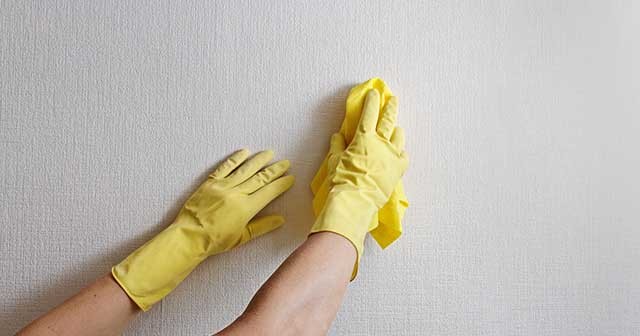
Wallpaper must be cleaned before painting.
It is important to prepare the room for painting. It is recommended to cover the floor and seal the baseboards. Otherwise, there is a risk of staining everything with paint. And if it dries, you will most likely have to remove it with a solvent, and this is a rather difficult task.
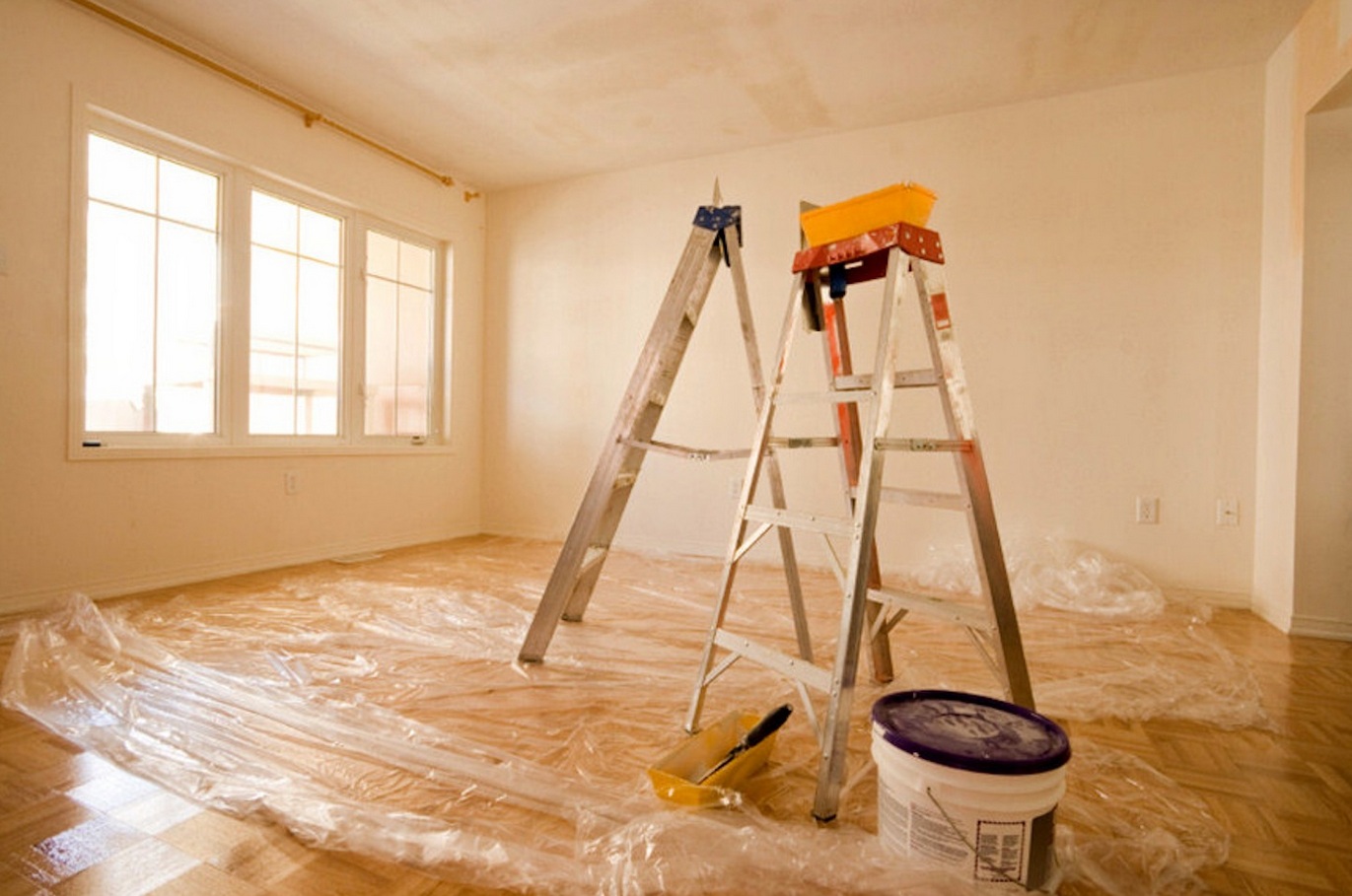
Before painting the wallpaper, cover the floor with film
In addition to painting, wallpaper can be further decorated or protected. The most simple solution The product will be coated with colorless varnish. This will increase the life of the paint and also additionally protect the surface of the wallpaper from external influences.
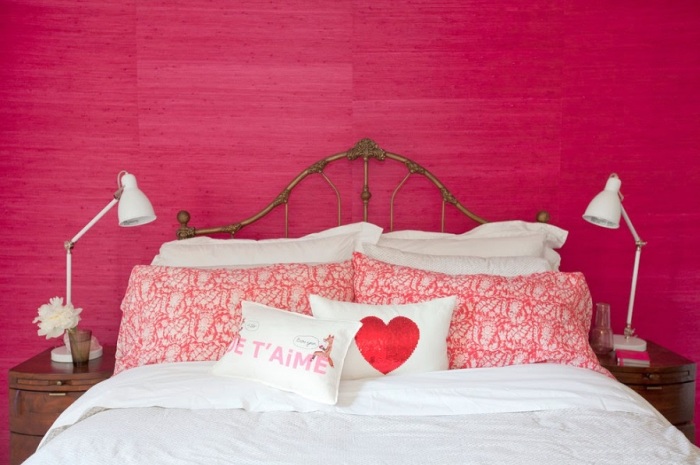
Varnish will provide additional protection for painted wallpaper
Another option would be to apply different patterns. Or use matte varnish, which will add additional shine to the wallpaper surface. At the decoration stage, it is possible to show any creative impulses. And in case of failure, they can be painted over.
Choosing paint for wallpaper for painting is a primary task. The service life and appearance of the product will depend on his literacy. Wallpaper should fit into the overall interior of the room and the entire house. And also very an important stage is their painting. It should be approached with special care. However, as a result of the work, the house will sparkle with new colors.
Video
When choosing finishing materials for walls or ceilings, modern people give preference to wallpaper intended for painting. Their main advantage is that the final design with their help is created by the owners of the house themselves.
This option is also suitable for those who like to frequently change the decor in their home, because they will be able to withstand several changes in the color of the walls. The most important thing when decorating walls covered in this way is the correct paint for the wallpaper to be painted. It will allow you to create indoors unique atmosphere, and is also easy to use and does not require special skills or the involvement of specialists. This article will tell you which wallpaper paint to choose depending on the materials and purpose of the room being decorated.
Just as the wallpaper itself comes in different types for painting, so the paint for it varies in composition. It’s worth noting right away that wallpaper paint for painting should not contain chemically active solvents, because they will dissolve the outer layer of the surface. There are several types of paints that use water as a solvent and are created, accordingly, for different types premises:
- water-based paint for wallpaper for painting (its feature is that it is not resistant to water even after drying; it is created on the basis of PVA) is most often used for painting ceilings in dry rooms, although it can be used in other rooms, but with it will fade when exposed to sunlight,
- water-dispersed or acrylic paint for wallpaper for painting (the polymer base is acrylic, which is resistant to water when dried, it can only be washed off with special solvents; it dries quickly, but can also fade in direct sunlight) is used even in kitchens or bathrooms, children's rooms and other rooms,
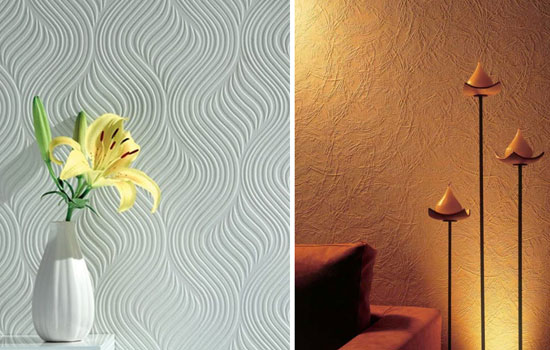
Each type of wallpaper has its own paint
— latex wallpaper paint for painting (the most expensive, but perfectly resistant to moisture and sunlight) can create glossy surfaces (the more gloss, the greater the moisture resistance) in any type of room.
In order not to make a mistake when choosing finishing materials, you need to clarify in advance which wallpaper paint to choose depending on its base:
- the paper base is unpretentious in the choice of paint, so you should only take into account the humidity in the room for which it is intended (if the budget is not limited, would be better suited latex paint for wallpaper for painting, so as not to weigh down the surface of the wallpaper),
- non-woven wallpaper requires acrylic or latex paints, and if they are painted exclusively on the inside (the color is applied in advance with reverse side, appears on the outside and an interesting pattern is obtained depending on the structure of the canvas), then it is better to prefer acrylic,
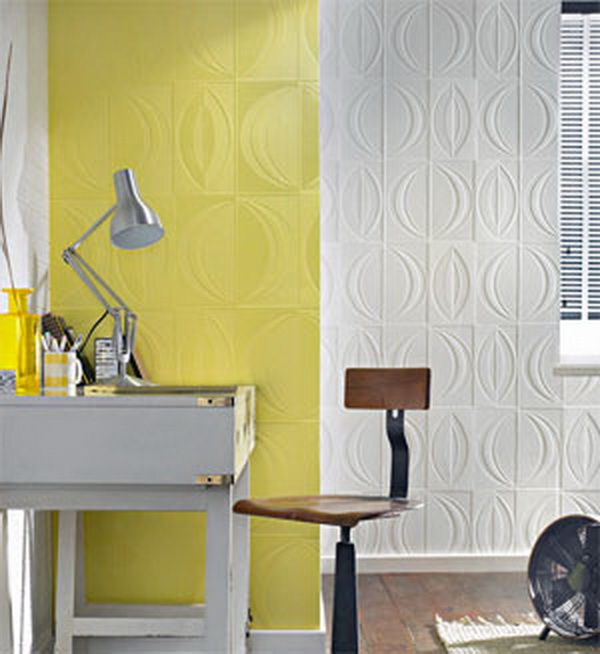
How to choose the right paint for wallpaper
- for vinyl wallpaper, acrylic paint is used for wallpaper for painting, but if they are made on a non-woven base, latex is also suitable,
— fiberglass is unpretentious in terms of the choice of paint, all three described types are suitable for it, and it can withstand up to 10 repaintings.
Color selection
The finishing materials market offers ready-made paints of various colors. But people often choose wallpaper for painting precisely in order to make the walls in the room in special rare shades. If people have already decided which wallpaper paint to choose, but desired color not in the palette, they resort to the tinting process. You can mix or tint colors yourself or using a computer.
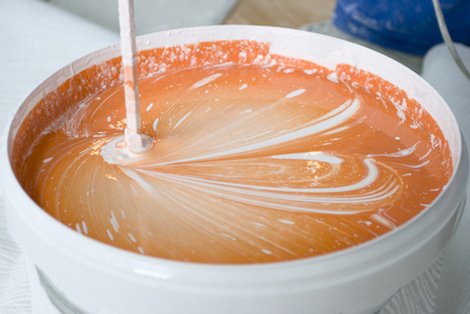
You have to do the paint tinting yourself
At home, you can achieve the desired shade yourself by mixing the base color with a coloring pigment. With some practice, getting the right color is not too difficult, but it is worth considering that the color on the walls after the paint has dried will be different from the color in the bucket. To eliminate this problem, it is advisable to first try the resulting mixture on a piece of wallpaper and see what happens when it dries. Another problem may arise: when one bucket of paint runs out, it will be very difficult to achieve the desired shade again.
All the disadvantages of the previous tinting method are eliminated in computer tinting. Computer technology will allow you to calculate how much paint and pigment is needed to create the desired shade after drying. With the help of special machines, specialists will receive a sufficient amount of paint, and if it is suddenly not enough, then the next time tinting it will be very easy to get the same shade.
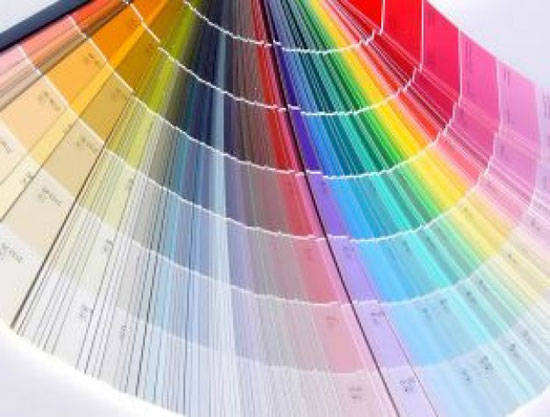
Wallpaper painting process
To start painting, you need to wait until the wallpaper glue has completely dried. If the surface is dry, clean and free of grease, you can begin to work: - using a roller, paint the walls from top to bottom, and control the pressure so that the intensity of painting is uniform everywhere,
- hard-to-reach places (corners, near the ceiling and baseboards, etc.) are painted with a brush.
To emphasize the structure, you can use a smoother roller that will paint only protruding parts or patterns on the wallpaper. Special attention It is worth paying attention to the quality of all tools for painting: if hairs easily come out of the brush, this will significantly complicate painting, as will the fragility of some parts of the roller. It is advisable to immediately buy high-quality tools so that the painting process is efficient, easy and fast.
In the next video, a professional finisher will share the secrets of painting wallpaper for painting.
Comfort to your home!
Some people like to frequently change the interior of their home without re-pasting the wallpaper. Optimal solution- repainting them. But not all types of wallpaper, both the wallpaper itself and the paint for it, are suitable for this. What kind of wallpaper paint for painting is needed for a specific type of wallpaper, its consumption and cost are suggested in the article.
Before deciding on the choice of paint, it is worth getting acquainted with the types of wallpaper that can be used for coating. The texture of such material is most often voluminous: with coarse fibers or embossed.
There are no patterns on it bright colors and prints, which allows you to apply different colors of paints and all kinds of images, bringing the most original ones into reality design ideas, creating unique interiors.
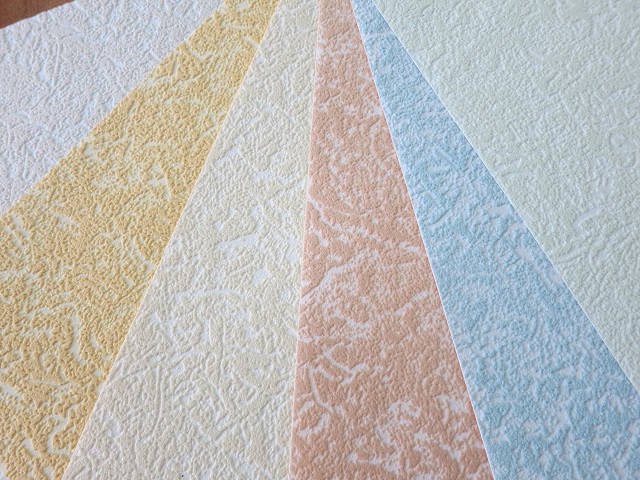
The peculiarity of such canvases is the possibility of repeated repainting. Almost all paintable materials can be painted at least 5 times, and some up to 15 coating applications.
Tip: Even very high-quality wallpaper should not be painted more than 10 times.
The main advantages of using wallpaper for painting:
- Changing the interior is cheaper than gluing new wallpaper (see).
- Saving money when performing work.
- Saving energy and time.
The main types of wallpaper for painting and their features are presented in the table:
| Wallpaper type | Peculiarities |
| Paper: two-layer and embossed. | The top layer is treated with a special water-repellent solution. Sometimes, an additional layer of wood shavings or sawdust is applied, which creates a relief on the surface of the wallpaper. |
| Vinyl. Usually this is non-woven, two-layer wallpaper with a relief texture: herringbones, waves, matting, pimples. | The bottom layer of material is non-woven, the top layer is vinyl. There may be paper-based vinyl wallpaper. |
| . They are distinguished by a beautiful texture with different densities and reliefs. They are made from thin intertwined glass fibers. | Have high reliability and durability, the surface can be washed even with a stiff brush. |
| Linkrust – the coating contains only natural materials. | During production, a special composition is applied to a paper or textile base, including wood flour, chalk, beeswax, linseed oil and rosin. |
Calculation of paint consumption and cost
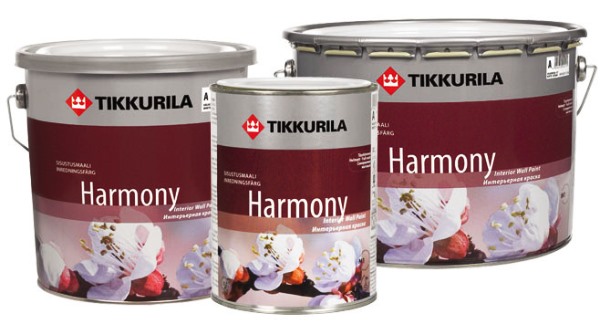
The consumption and cost of wallpaper paint for painting can vary significantly, which is influenced by:
- Manufacturer.
- Wallpaper type.
- Number of layers applied.
When calculating the coating consumption, the parameters of the room are determined.
For this:
- The area of all walls of the room that must be painted is measured.
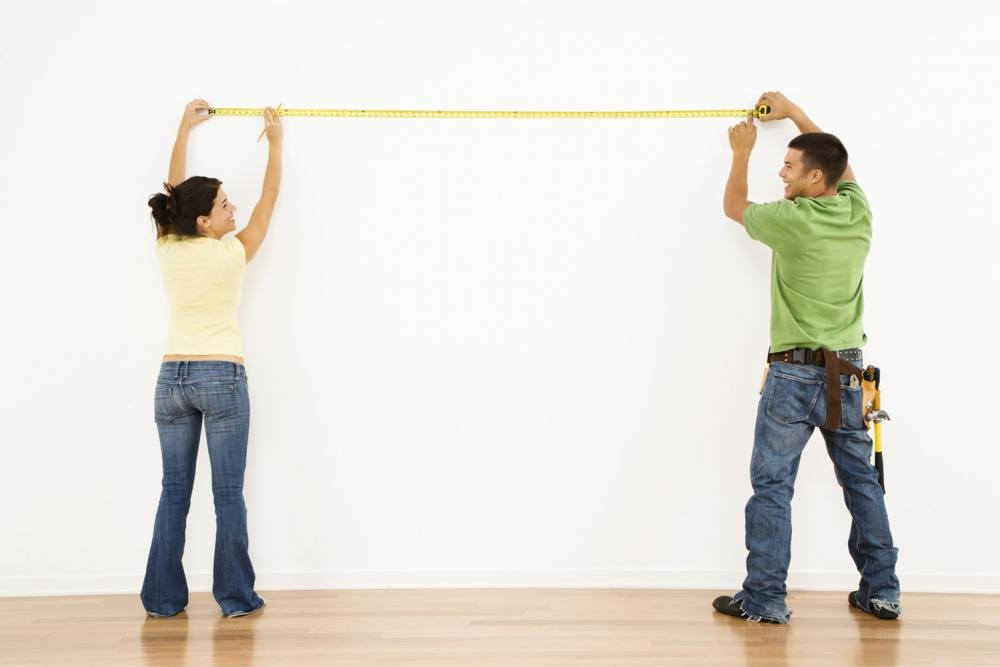
- The areas of openings for doors and windows are calculated.
- The type and density of coloring agents is taken into account.
- The number of coating layers is determined.
For example:
- For single-layer painting, 150-180 g/m² of paint is required.
- For two-layer painting you will need 250 g/m².
- Painting canvases with a rough surface, such as glass wallpaper (see), allows you to use paint more economically compared to paper materials.
![]()
Type coloring materials determines the cost of wallpaper paint.
For example:
- Acrylic dyes can cost 170-350 rubles per liter.
- The price of latex paint is from 400 to 1000 rubles per liter.
- The cost of water-dispersion paint can range from 315 to 590 rubles per liter.
Wallpapering for painting
![]()
Advice: You cannot glue wallpaper overlapping; the monotonous color of the walls after painting will greatly show even very small tubercles; the wallpapers should be glued end-to-end.
When choosing adhesive for canvases for painting, you need to pay attention to the material from which their base is made: paper, vinyl or non-woven fabric. paper base have fiberglass wallpaper.
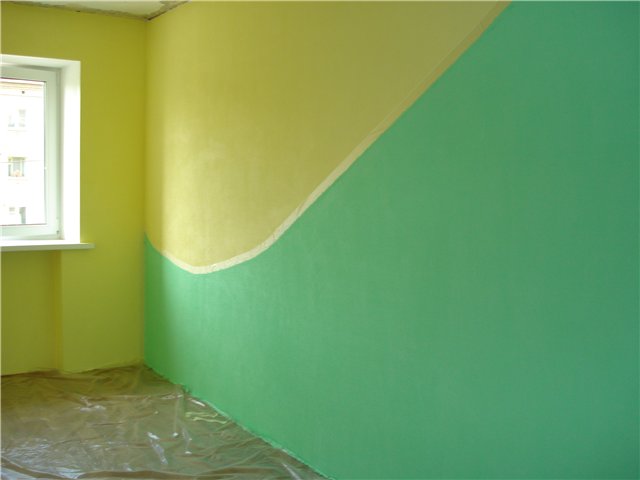
Wallpaper paint is selected not only by color and price, but also by the type of material of the canvas.
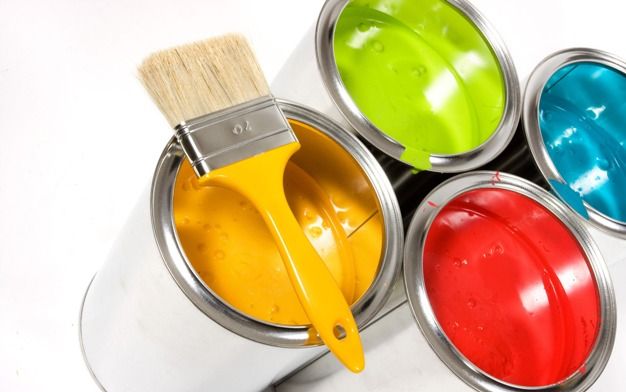
White wallpaper allows you to paint it with your own hands in any color. They are usually painted with acrylic paint. At the same time, it is worth considering how much the paint costs, the expensive composition will apply better to the wallpaper, and the coating will last longer.
The consumption of wallpaper paint for painting is influenced by the type of wallpaper and its absorbency, the method of its application, and the color that needs to be given to the wallpaper. On bright hues It is enough to apply one coat of paint; for dark ones, in order to get the same shades as for light ones, two and sometimes three layers are required.
The approximate consumption of the composition is:
- For absorbent fabrics: per 10 m² of area you will need one liter of paint.
- For non-absorbent fabrics: a liter of paint will be enough to paint 8 m².
Which better paint for painting wallpaper, colors for rooms for various purposes, will be discussed further.
Types of paint
To paint wallpaper, paints in which water is the solvent should be used.
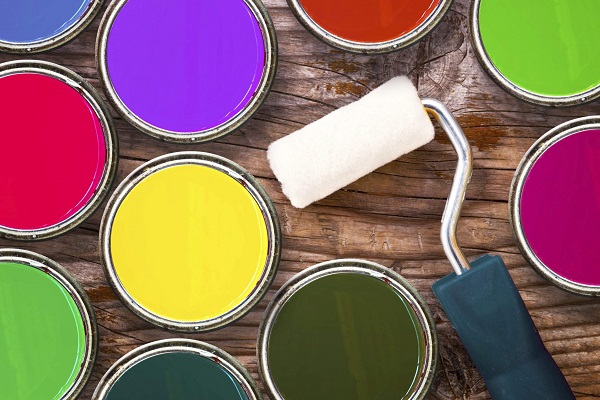
Advice: Any compositions containing different chemically active solvents cannot be used for application to wallpaper. Otherwise, the chemically active substance present in them will dissolve the outer coating of the wallpaper.
Water-based paints are water-based and water-dispersed. Their difference is in the grain size obtained after adding water. have a very fine fraction. Water-dispersed - with a larger fraction based on polymers. Such compositions make a huge difference in their resistance to water. In a liquid state, the relationship between paints and water is approximately the same.
But after drying, there is a significant difference:
- Water-based - removed by water, dissolving in it.
- Water-dispersed paint after polymerization acquires resistance to water and water-repellent properties. This paint can only be removed with special solvents.
Wallpaper can be painted with three types of paint.
She may be:
- Acrylic. Its full name is water-dispersion matte acrylate paint. When painting wallpaper, this is the most popular option. The cost of acrylic paint is lower than latex paint, the quality is quite high, which ensures good coverage at minimal cost.
This paint comes only matte, but a wide range of color palettes satisfies even the most sophisticated buyers.
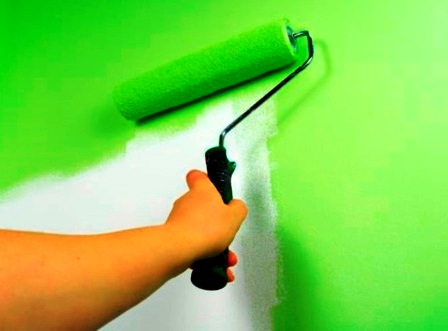
The coating is highly resistant to moisture and has less abrasion, which allows it to be fully used in any room.
This is the most expensive and highest quality wallpaper paint, with maximum performance characteristics, which ensures long-term operation without any problems. Latex paint is the only coating that produces glossy surface on the wallpaper. The degree of gloss is indicated by the instructions on the can or its name.
- Based on PVA or polyvinyl acetate. Even after hardening, PVA dissolves in water. This is the cheapest paint. It can only be used in heated residential premises with a good microclimate.
Choosing paint color
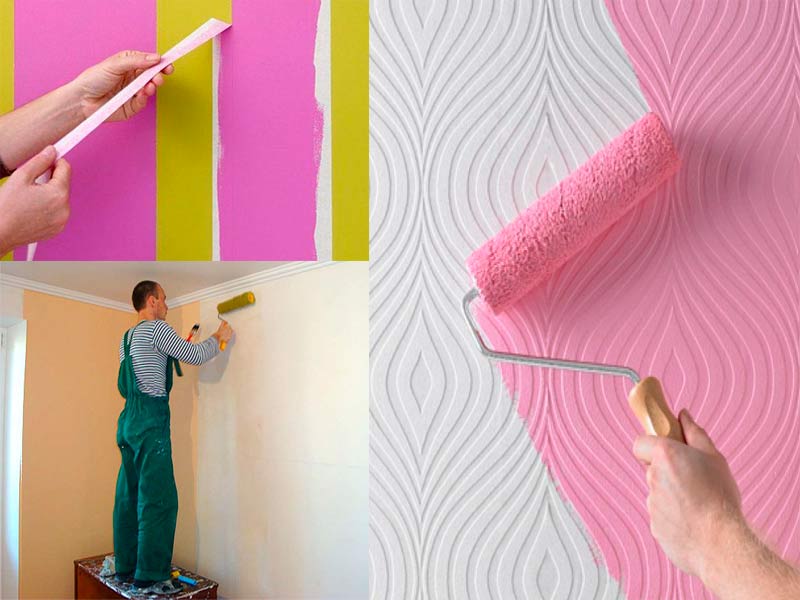
Any type of wallpaper paint for painting by color is selected individually by manual or machine selection of paint. By manual selection, the pigment of the desired color is purchased. It should be gradually added to the white paint base, constantly stirring the composition.
Disadvantages of this method:
- It is difficult to achieve the desired shade; you will need to intuitively add colorants.
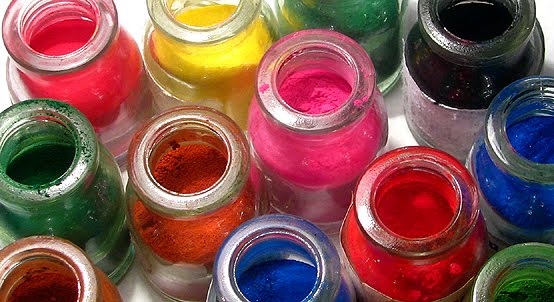
- Optional after mixing purple with pink, it will work out lilac shade, pigments can behave unpredictably.
- After achieving the desired shade from one can of paint, it will be very difficult to repeat the same color with the rest of the cans.
An alternative to manual selection of colors and shades of paints is machine selection, when the machine does everything itself, and a person only orders the required shade.
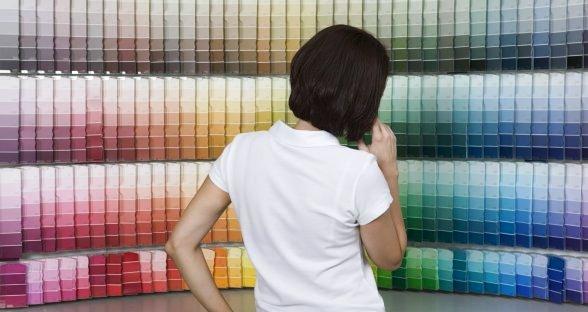
When choosing a paint color, you must adhere to the following recommendations:
- Fewer options make choosing paint colors easier. A special table helps determine the desired shade.
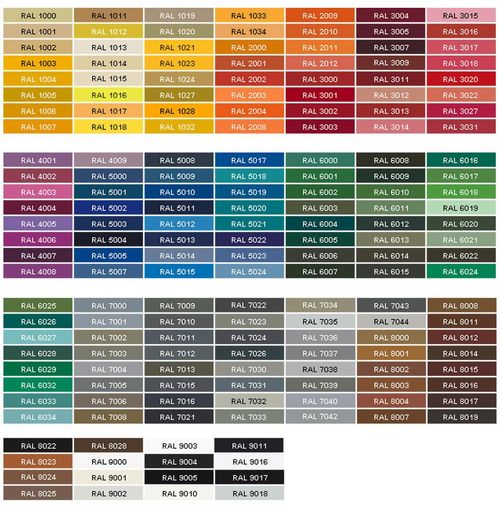
- You should get acquainted with the color catalog.
- Don't forget about the purpose of the room.
- The color should match your tastes.
- Of the two options, preference should be given to a less saturated shade.
- Consider the texture of the wall.
- Do test coloring walls.
![]()
- The color should be tested in real conditions of the room for which the paint is intended.
- Do not violate the rules of painting according to the instructions.
- The coating acquires the desired color in a few days.
The video in this article shows in detail about the selection and dilution of paint.
Matching wallpaper and paints of different types
WITH different types Not all types of wallpaper combine well with wallpaper; they must be selected for a specific type of wallpaper. In addition, it is necessary to take into account the conditions in which the coating will be used.
The most unpretentious ones when choosing paints are paper sheets and fiberglass-based canvases. These materials can be coated with any type of paint. In this case, only the room in which the materials are pasted is taken into account.
For example:
- In a regular living room, you can use any of the above paints for paper wallpaper.

- If a permanent large luminous flux, you cannot use PVA-based wallpaper paint - it will fade quickly and very unevenly. At the same time, it is more rational to use latex-based compositions, which are most resistant to ultraviolet radiation.
- Paper wallpaper glued to the kitchen with PVA-based glue will destroy ordinary water vapor, which requires the choice of other paint options.
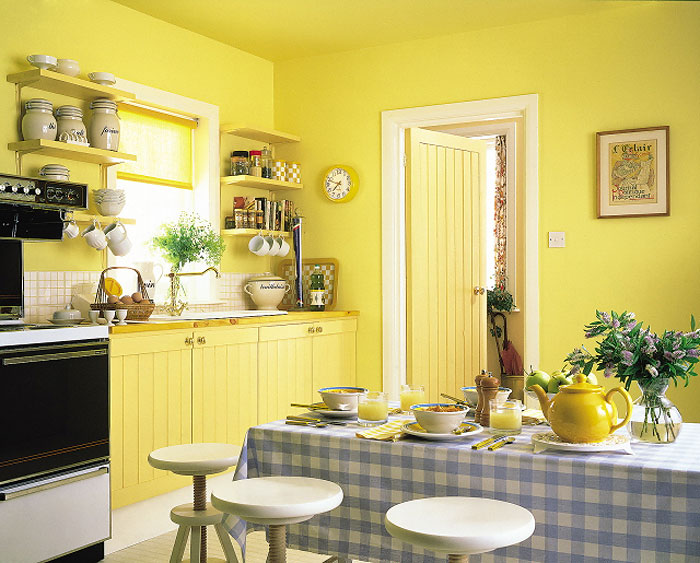
- Fiberglass wallpaper itself has a high degree of protection against moisture. They can even be painted in bathrooms, as in the photo. It is better to use paints that have a high degree of protection against moisture, such as acrylic and latex coatings.
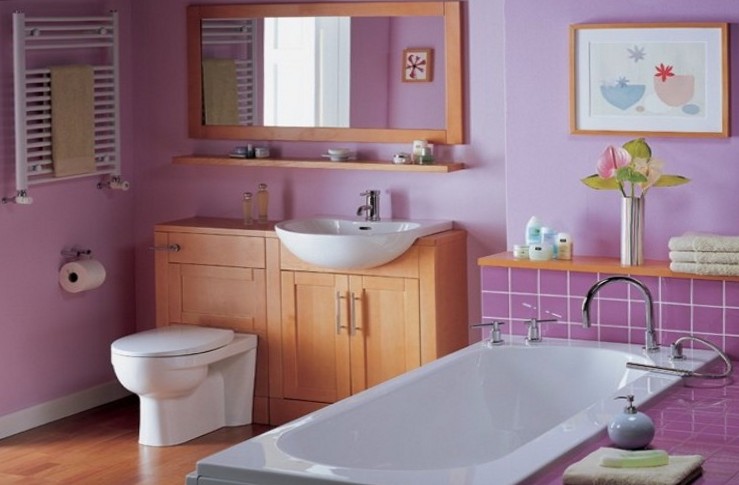
- All types of fiberglass wallpaper compositions are suitable for dry rooms.
- Non-woven materials should be painted with latex and acrylic paints, but taking into account the humidity in the room.
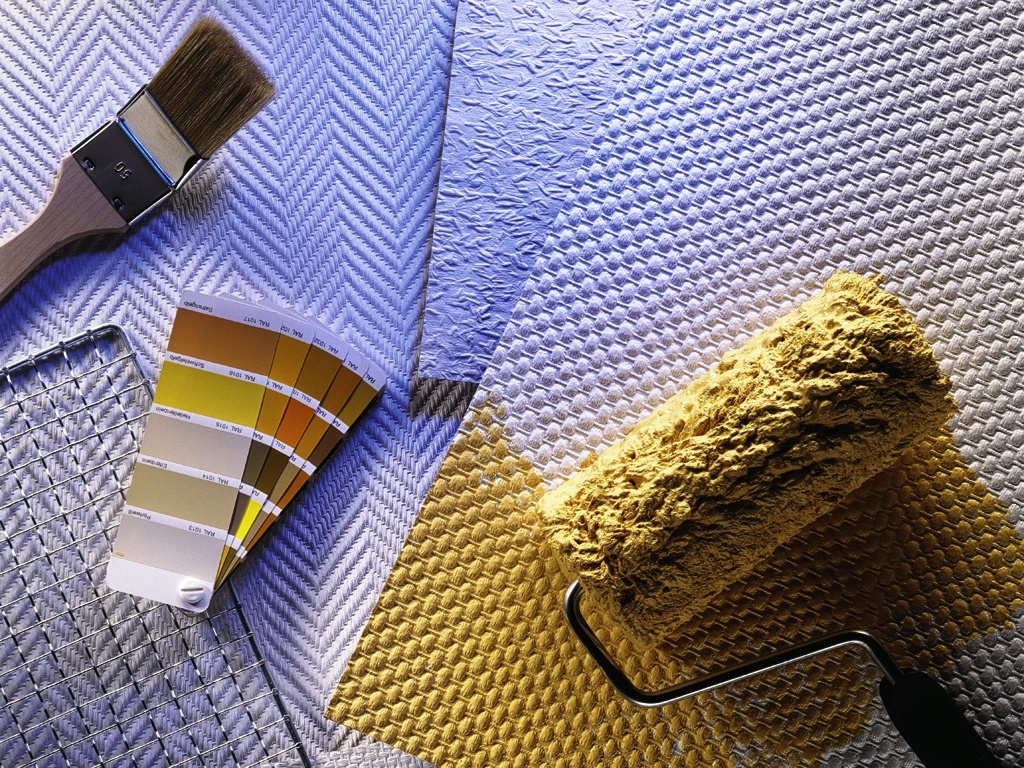
This way you can pre-determine which paint to choose for the wallpaper to be painted. But it is worth remembering that after drying, the coating, as a rule, will begin to darken, except for acrylic and latex, which practically do not change their color. Therefore, when tinting paint in a color, you need to take into account that on the canvas it should be lighter than in the catalog.
Interiors are not always decorated with one type of coating. Often paint is applied to the pasted surface to highlight the relief of the wall. The individuality of the room is given by the correctly chosen shade and quality of the product being coated. Therefore, you need to take a responsible approach to the choice of wallpaper paint for painting and study which one is best suited.
Types of paints for wallpaper coating
Many novice craftsmen are confident that any type of wallpaper is suitable for high-quality wallpaper. However, this is not the case. When choosing paint, you need to consider not only its manufacturer, but also type of room illumination, the width of the wallpaper and the cost of the purchased product.
Unscrupulous manufacturers sometimes resort to diluting the paint with water. However, this is strictly prohibited when working with wallpaper: the liquid composition applied to the walls destroys the structure of the canvas, and the entire work will have to be redone again. Therefore, you need to choose a coating in trusted stores who collaborate with famous brands.
Before purchasing, you should familiarize yourself with the offered range. And also study all the positive characteristics of each type of paint.
The following types of paints are used to cover walls:
- water-dispersed;
- alkyd
Acrylic
Acrylic paint has an advantage in the list of wallpaper coating products. This is due to her positive properties. Of these, safety from an environmental point of view should be highlighted, high drying speed and the absence of unpleasant odors.
This type of coating is available in many shades on store shelves. Acrylic paint is ideal for covering indoor walls. The painting substance can be applied to any type of wall covering, so its cost is higher compared to other types of products.
This paint can also be used to create interiors in children's rooms, as well as in kitchen areas.
For wall coverings, it is recommended to give preference water-based acrylic paint. The advantage of this paint is that, compared to other types of coating, it is practically does not burn out under the influence of sunlight.
There are acrylic paints produced on water dispersion basis. They are often presented only in white, but this problem is easily solved with the help of additional coloring in the desired shade that the owner of the room liked.
An additional advantage of this composition is considered to be its ability to pass air to the walls so that they can “breathe.” Manufacturers often add special additives to the paint composition that allow effective fight with fungus on the walls of the room.
Alkyd
The alkyd paint composition is not suitable for covering wallpaper in the bedroom or living room.
This is explained by the fact that the substances included in the coating can cause harm to human health. Alkyd coating can only be used in non-residential premises where people do not spend most of their time.
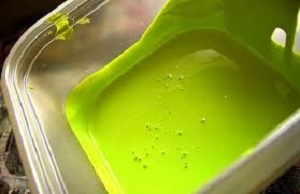 Alkyd paints have a short service life. When applied correctly and careful operation he reaches four years. This is much lower than that of acrylic coatings. After the first two years of application to the wall, the appearance of the composition becomes less attractive and wears out quickly.
Alkyd paints have a short service life. When applied correctly and careful operation he reaches four years. This is much lower than that of acrylic coatings. After the first two years of application to the wall, the appearance of the composition becomes less attractive and wears out quickly.
Along with the disadvantages of this paint, there are also positive aspects:
- Bright colors and rich shades.
- High resistance to moisture and sunlight.
- Additives against fungal formations included in the composition.
Water-dispersed
This type of paint is one of the most popular on the market. building materials. The popularity of water-dispersion paints was brought about by environmental properties and wide palette presented colors.
For a master who is faced with the choice of paint for the first time, it is difficult to find the differences between water-dispersion and acrylic paint. However, there are some. It should be noted that acrylic coating is also one of the varieties of water-dispersion paint.
Latex paint, made on a water-dispersion and acrylic base, is ideal for coating non-woven wallpaper.
She will emphasize relief of the structure, if there is one on the wall. This type of coating is universal and suitable for use in the bathroom or kitchen and, of course, in living rooms and bedrooms. This paint is for others does not cause harm because it has no characteristic odor.
The advantage of this paint is undoubtedly high speed drying out surfaces.
There is another subtype of paint - latex water-dispersion paint that is durable and has a smooth surface after application. These properties are achieved by adding the manufacturer to the composition of special substances butadiene-styrene and acrylic-based latex.
In construction stores, this type of coating is presented in white, but you can always use the tinting service and give the paint the shade of your dreams. You won't be able to achieve a rich color. However, pastel colors will decorate the interior or bedroom.
When choosing paint of this type, you need to be guided by the choice based on the room where you intend to apply it.
If the room is with high humidity, it is recommended to use wear-resistant compounds.
For a bedroom or nursery, a regular one is suitable latex based paint. This type of coating easily tolerates wet cleaning.
Washable
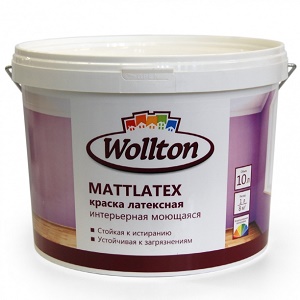 Sometimes remodelers use washable paints when painting walls. These paints are convenient because the surface can be washed with a damp cloth using detergents. And do not worry about the appearance of the wall and the condition of the composition.
Sometimes remodelers use washable paints when painting walls. These paints are convenient because the surface can be washed with a damp cloth using detergents. And do not worry about the appearance of the wall and the condition of the composition.
This option is convenient in those families where there is children or pets. If the slightest mark is left on the surface, the owner of the room can easily remove it from the wall.
Removal requires wet cleaning. It is important to follow the rules for applying such paint to the surface of the wallpaper.
It is important to ensure that no smudges form and that the surface remains level.
A specialist in the video will tell you about choosing the right paint for wallpaper:
Selecting a shade
On the building materials market or in a specialized store it is presented a large number of colors of paint for the wall surface. But buyers often want to opt for rare shades in order to give the room personality.
If, when making a choice, the desired color was not found, then the customer service specialist may suggest that the buyer resort to the tinting process. You can choose the shade yourself or use the help of a computer program.
When tinting yourself, a coloring pigment is added to the base color and the result is evaluated. It is not difficult to do this action. However, it is important to take into account the fact that after the paint has completely dried on the surface of the wallpaper, it may happen that the desired color will not be reproduced. Instead, the coating will appear in lighter colors.
In order to avoid this problem, it is recommended to take one piece of wallpaper and brush it with paint. And after some time, evaluate the resulting color. Another problem with mixing colors in a bucket is when you need paint and the container has run out of paint. Achieving a similar effect with another can of paint will be quite problematic.
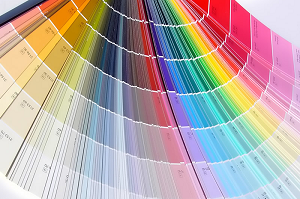 All of the above disadvantages are completely solvable. For this we recommend take advantage of computer technology, capable of accurately determining the required amount of paint and added pigment (see photo). In this way, you can accurately determine in what proportion to mix the ingredients so that after the surface dries, the shade retains its original appearance.
All of the above disadvantages are completely solvable. For this we recommend take advantage of computer technology, capable of accurately determining the required amount of paint and added pigment (see photo). In this way, you can accurately determine in what proportion to mix the ingredients so that after the surface dries, the shade retains its original appearance.
Specialists will mix the required amount of paint and pigment. If there is not enough paint, they will again diagnose the color on the computer and achieve the desired effect using other tones.
A good visual effect is achieved by using mixtures that contain natural pearlescent pigment for paint.
What paint should I use for the wallpaper?
The choice of paint should be made taking into account the structure of the wallpaper and the characteristics of the room where the work will be carried out.
Wallpaper made of paper or fiberglass can accept any of the following on its surface. existing species paints. Rooms filled with an abundance of rays penetrating through the windows are recommended to be covered latex paint. After all, its composition allows it to maintain stability and not cause the coating to prematurely fade the shade.
It is important to remember that painting wallpaper can be done no more than a few times.
The greatest number of colors is allowed for non-woven wallpaper. The manufacturer often indicates on the packaging ten times as the limit for applying new shades. But experts believe that such work needs to be carried out no more than five times. With each new application, the wallpaper texture wears out, and the structure becomes unsightly in appearance.
For wallpaper with a non-woven structure, use paints based on based on latex and acrylic. If necessary, simply replace this paint with another one. At the same time, the appearance of the wallpaper and the wall will not deteriorate.
Water-based paint, which has both glossy and matte properties, is most suitable for non-woven fabrics and paper. For fiberglass, it is better to use latex components. They will allow for regular cleaning of the premises and will last for several years.
The building materials market offers a huge number of paints produced by various manufacturers. And it is difficult for an inexperienced master to decide on the brand that deserves choice and purchase.
When choosing, you need to pay attention to companies that have been producing products for many years and have proven themselves on the positive side.
These brands include "Tikkurila". It has gained the respect of customers thanks to its extensive color scheme, ease of application, high stability on the surface and no need for sanding the product. Most of the work related to painting premises is done with this paint.
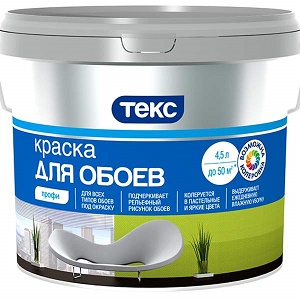 You should also consider the manufacturer "Tex". Many experts note that it was this paint that helped them create the desired interior and carry out work at the highest level. The positive features of this substance are a large palette of colors, high drying speed of the wall and the absence of odors that can harm the human body.
You should also consider the manufacturer "Tex". Many experts note that it was this paint that helped them create the desired interior and carry out work at the highest level. The positive features of this substance are a large palette of colors, high drying speed of the wall and the absence of odors that can harm the human body.
This also includes the presence smooth and matte surface after the work has been completed.
Paper
The question of whether it is worth painting outdated paper wallpaper is often asked by home owners who want to bring something new to an ordinary interior without resorting to full-scale repairs and removal of old paintings.
If, when examining the wallpaper, it is obvious that they have been subject to mechanical stress, half of them have peeled off from the wall, and the appearance no longer represents a new structure, then it is recommended to abandon the idea of painting old paper sheets.
If the type of wallpaper in acceptable condition but they just don't fit in new interior, and the former color is no longer bright, then you can resort to painting this type of wallpaper.
The choice of colorant for such a surface will depend depending on the degree of illumination indoors and surface type. For a kitchen where a smooth textured surface predominates, it is better to opt for semi-gloss paints. It is acceptable to choose a matte type coating for the interior of a living room or bedroom.
Before deciding on the choice of paint, you should consider a number of factors:
- the time allotted for the paint to dry;
- the ability to carry out wet cleaning on the wall surface;
- resistance to mechanical damage.
For work with conventional paper wallpaper you need to choose acrylic paint.
Its advantages are that it practically does not change color after dyeing, and its It is convenient to wash away dust and dirt.
Liquid wallpaper
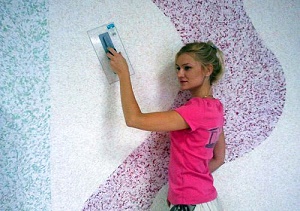 Painting liquid wallpaper is often accompanied by the question: Is it possible or not to do this? There is no clear answer to the question posed. There are only general recommendations, which can be applied or rejected.
Painting liquid wallpaper is often accompanied by the question: Is it possible or not to do this? There is no clear answer to the question posed. There are only general recommendations, which can be applied or rejected.
The owner of the premises must weigh all the positive and negative aspects and come to a thoughtful decision on carrying out work on such a surface.
There are positive aspects to painting liquid wallpaper. The following can be distinguished from them:
- Wear of liquid wallpaper during long-term use suggests the presence of cracks and stains on the surface.
With the help of painting, you can achieve a uniform structure of the wall and its updated appearance without using additional expensive materials.
It is important to know that if the surface contains stains from petroleum products, they must be degreased before carrying out work.
- When the wallpaper fades, painting will come to the rescue, allowing the interior to sparkle with new colors. It will bring an atmosphere of comfort to the room where the improvement work was carried out.
- When using high-quality wall compositions, you can change the decor using color palette and update it many times.
- The ability to create an individual atmosphere in the room during the coloring procedure. The latter will highlight in better side the owner's home from the neighbors.
The advantages of painting with liquid wallpaper are overshadowed by the inherent nature of such work. disadvantages:
- The structure of liquid wallpaper is a unique material. It is pleasant to the touch and has a heterogeneous structure. This coloring gives the wall a smooth and ordinary look.
- This type of coating often includes shiny and silky elements, allowing you to diversify the room and give it individual features. After painting, the wall will have a normal and at the same time smooth appearance, which may upset some family members.
- Another significant drawback This method of application to the wall means that it is impossible to re-remove liquid wallpaper from the wall and apply it again.
- An option is to spray paint over the surface. This does not prevent the walls from “breathing” and delighting the owners of the premises with their appearance.
The paint blocks the removal of the material, thereby pushing the master only to a single solution to such a problem. All he has to do is remove the covering. And if necessary, re-paint the new one.
To carry out this type of work, it is recommended to use an option that can save significant financial savings. This is about water-based paint. When using it, you do not need to use special instructions and follow the rules of application.
If necessary, this composition is diluted with a small amount of water.
If the owner of the premises wants to consolidate the result for a long time, then the option with a large contribution of financial resources will suit him. In this case we mean acrylic paint. It is characterized by increased resistance to mechanical damage and, as a result, greater durability of the coating on the wall.
It is possible to apply latex compounds, which, in turn, are water resistant. And this allows you to carry out cleaning work in the proper form.
How to cover the walls before wallpapering?
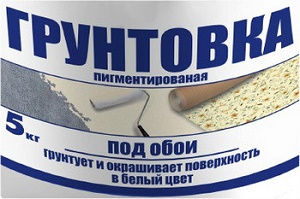 Previously, it was common to glue wallpaper to walls without an additional layer of primer. Modern canvases are produced with the greatest weight and compacted structure. In order to fix them on the walls, you need additional impregnation in the form of a layer of soil mixture.
Previously, it was common to glue wallpaper to walls without an additional layer of primer. Modern canvases are produced with the greatest weight and compacted structure. In order to fix them on the walls, you need additional impregnation in the form of a layer of soil mixture.
This solution prevents excess moisture from the glue and its further absorption into the putty. The soil mixture after application forms a dense barrier film, which will allow the glue to strengthen. And the wallpaper will not come off the first time you open the window.
The following mixtures are suitable as a primer:
- Acrylic. Its drying time does not exceed five hours. Plus, it does not have a pungent odor containing harmful additives.
- Alkyd. Not recommended for residential use. The disadvantage of such a soil mixture is the long drying time, which can reach one day.
- Antifungal. This substance is not only capable of increasing adhesion. It will resist the formation of fungus and mold on the surface for wallpapering.
- Universal. Suitable for all types of walls and wallpaper. The advantage of such a primer is its deep absorption into the surface to be coated.
You cannot skip the priming stage, because if the surface is untreated, the wallpaper may peel off, and the overall atmosphere of comfort will be lost.
Priming the wall is mandatory even if the owner is sure that his room is not exposed to fungi and other microorganisms that destroy the structure of the paintings.
If you plan to paint the pasted wallpaper in light or white colors, it is recommended to cover the wall initially pigmenting paint for walls. Otherwise, after the paint on the wallpaper dries, dark spots may appear.
Paint consumption
In order to avoid the unpleasant moment that the paint has run out and the surface of the wall is not completely covered, you need to pay attention to the following factors:
- The ability of the wall to absorb the required amount of composition;
- Paint consumption per square meter;
- The area of the entire surface to which the composition is to be applied.
The total area is the sum of the perimeter of the walls. In order to calculate the area, you need to multiply the length by the width. The result obtained by multiplication will indicate the surface area intended for painting.
It must be remembered that openings for windows and doors must be subtracted from the resulting amount.
In any case, you need paint buy in excess in case the walls actively absorb the composition. Or there will be an increased temperature in the room.
You can find out the exact paint consumption by looking at the packaging. For each type of such substances, the consumption is individual. It consists of density and composition. Typically, in standard consumption, craftsmen rely on the figure of 200 g per square meter.
This scenario is justified if we take into account the work process performed in one layer. When performing work in two layers, the consumption will increase significantly, but will not exceed 400 g per square meter.
It is important to know that materials absorb paint differently. For example, vinyl and fiberglass absorb less applied substance than paper and non-woven fabrics.
How to paint wallpaper - the secrets of professionals. Watch the video:
